Forums
- Forums
- Axis And Allies Forum
- General Discussion
- Aviation News
Aviation News
Post a reply
- Go to Next topic
- Go to Welcome
- Go to Introduce Yourself
- Go to General Discussion
- Go to Screenshots, Images and Videos
- Go to Off topic
- Go to Works in Progress
- Go to Skinning Tips / Tutorials
- Go to Skin Requests
- Go to IJAAF Library
- Go to Luftwaffe Library
- Go to RAF Library
- Go to USAAF / USN Library
- Go to Misc Library
- Go to The Ops Room
- Go to Made in Germany
- Go to Campaigns and Missions
- Go to Works in Progress
- Go to Juri's Air-Raid Shelter
- Go to Campaigns and Missions
- Go to Works in Progress
- Go to Skinpacks
- Go to External Projects Discussion
- Go to Books & Resources
-
 Main AdminBOD? MAIN AIR STATION, Norway (AFNS) -- The 48th Fighter Wing trained alongside the Norwegian, Swedish and Finnish air forces from May 23-27 during exercise Arctic Fighter Meet 2016.
Main AdminBOD? MAIN AIR STATION, Norway (AFNS) -- The 48th Fighter Wing trained alongside the Norwegian, Swedish and Finnish air forces from May 23-27 during exercise Arctic Fighter Meet 2016.
Seven jets from the 492nd and 493rd Fighter Squadrons were brought to Norway to conduct basic fighter maneuvers with dissimilar aircraft to improve combined air operations.
"Back home we are training against like aircraft, other F-15s," explained Maj. Nick Norgaard, the Arctic Fighter Meet 2016 project officer. "The opportunity that is unique here is that we get to train with F-18s, F-16s and Gripens. That allows us to get a different perspective on how other aircraft maneuver because when we go to war, we don't expect to fight other F-15s."
This training exercise allowed forward-based U.S. Airmen and aircraft from Royal Air Force Lakenheath, England, to train with NATO allies and European partners, building on skill sets and improving every nation's ability to seamlessly work together.
"There are always challenges, that's why we do training like this," said Royal Norwegian Air Force Col. Baard Reidar Solheim, the Bod? Main Air Station commander. "We are getting better every time. To have different types of jets work together from different nations, there will always be different things to think about and different ways of doing things."
Training regularly with other nations improves the U.S. Air Force's interoperability with fellow air forces and increases all NATO allies? and partner nations' overall ability to respond to crises together.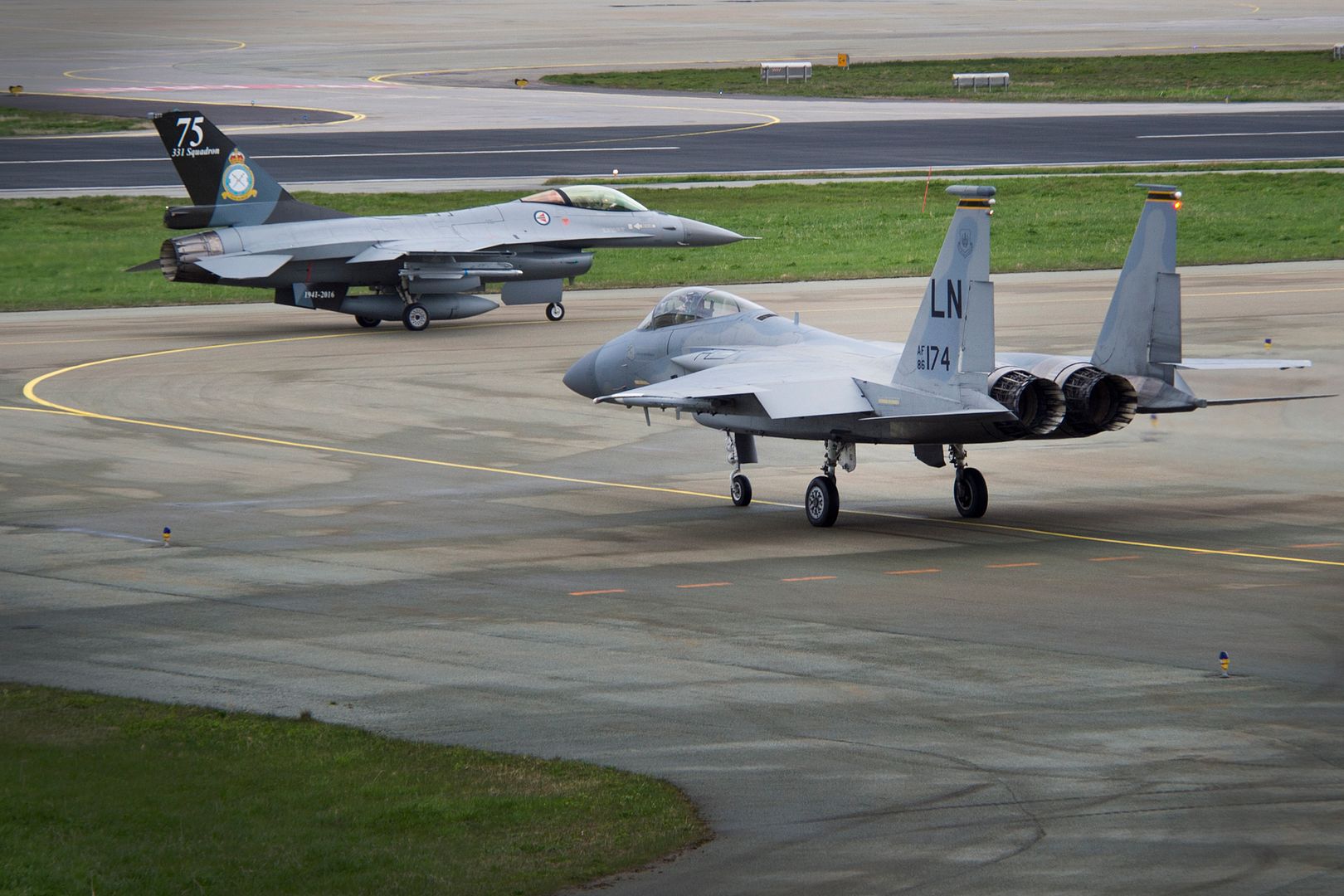
GULF OF ADEN (May 31, 2016) A CH-53S Super Stallion, assigned to the 13th Marine Expeditionary Unit, hovers above amphibious assault ship USS Boxer (LHD 4). Boxer is the flagship for the Boxer Amphibious Ready Group and, with the embarked 13th Marine Expeditionary Unit, is deployed in support of maritime security operations and theater security cooperation efforts in the U.S. 5th Fleet area of operations. (U. S. Navy photo by Mass Communication Specialist 2nd Class Debra Daco/Released)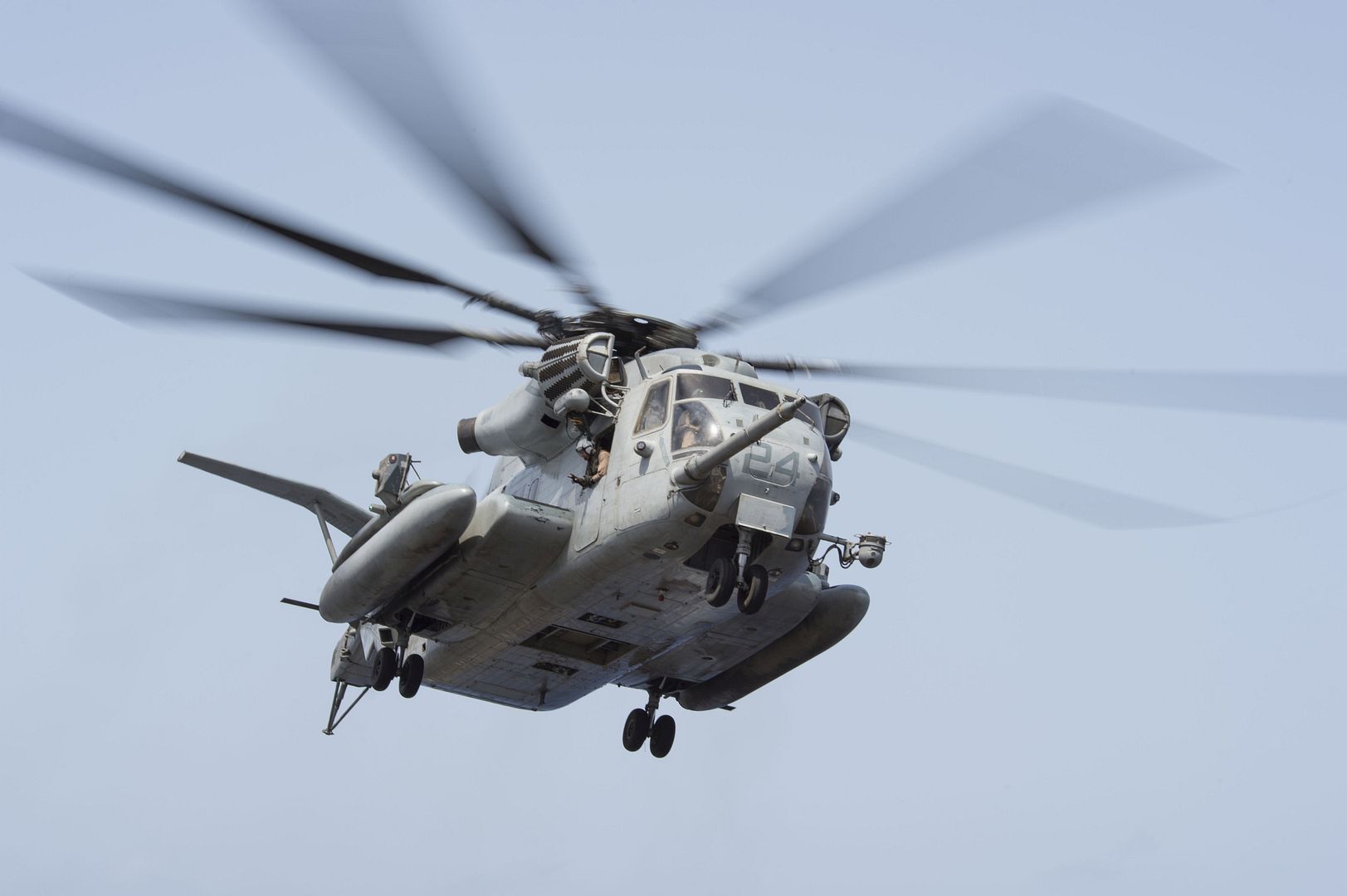
GULF OF ADEN (May 31, 2016) An MV-22 Osprey aircraft, assigned to the 13th Marine Expeditionary Unit, hovers above amphibious assault ship USS Boxer (LHD 4). Boxer is the flagship for the Boxer Amphibious Ready Group and, with the embarked 13th Marine Expeditionary Unit, is deployed in support of maritime security operations and theater security cooperation efforts in the U.S. 5th Fleet area of operations. (U. S. Navy photo by Mass Communication Specialist 2nd Class Debra Daco/Released)
An E-3 Sentry (AWACS) completes refuel during a mission over Iraq on May 31, 2016. Airmen from the 340th EARS refueled a E-3 Sentry over Iraq, in support of Combined Joint Task Force-Operation Inherent Resolve. The U.S. and more than 60 coalition partners work together to eliminate the terrorist group ISIL and the threat they pose to Iraq and Syria.
(U.S. Air Force photo/Staff Sgt. Larry E. Reid Jr., Released)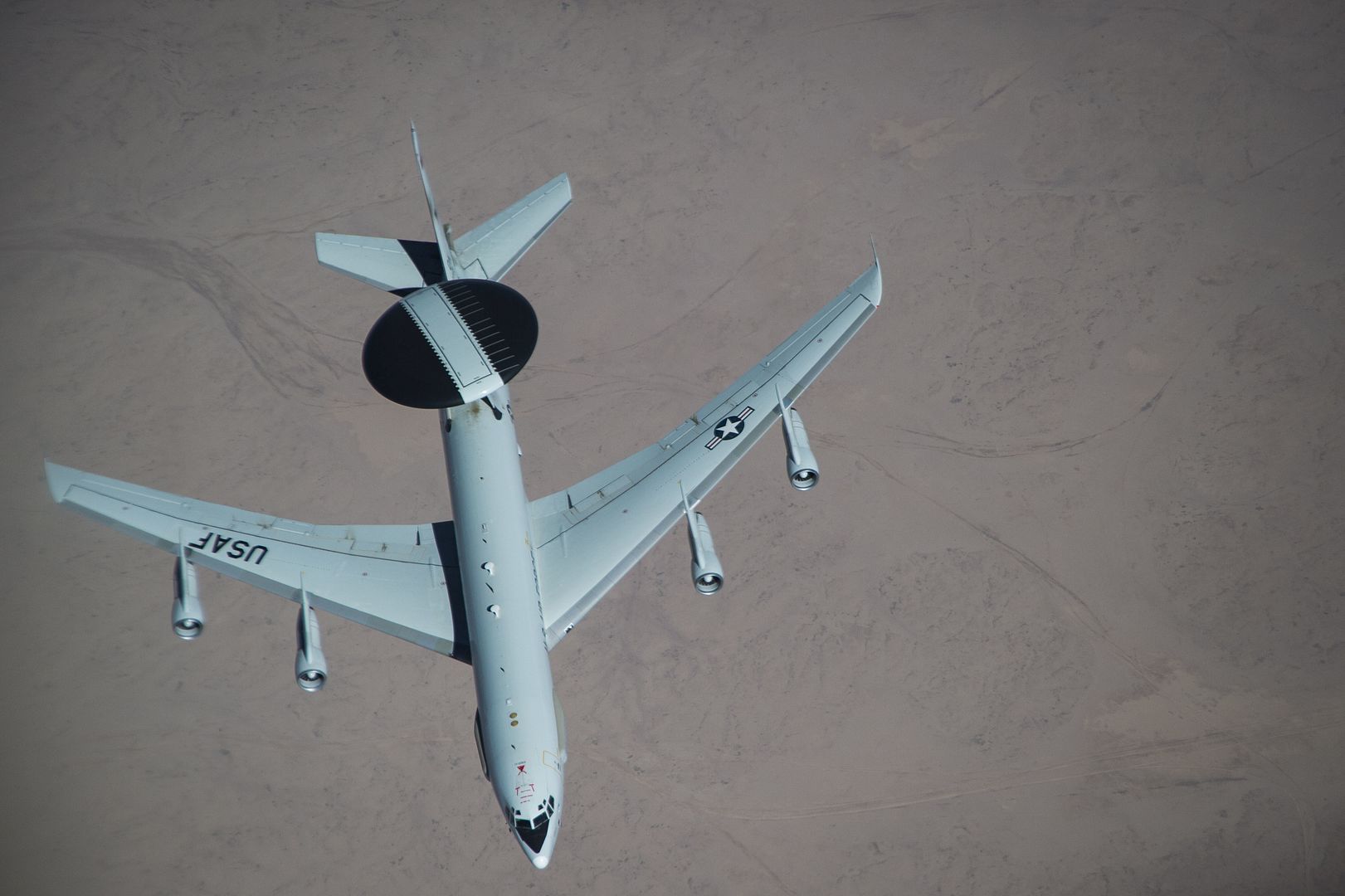
An E-3 Sentry (AWACS) approaches the refueling boom during a mission over Iraq on May 31, 2016. Airmen from the 340th EARS refueled a E-3 Sentry over Iraq, in support of Combined Joint Task Force-Operation Inherent Resolve. The U.S. and more than 60 coalition partners work together to eliminate the terrorist group ISIL and the threat they pose to Iraq and Syria.
(U.S. Air Force photo/Staff Sgt. Larry E. Reid Jr., Released)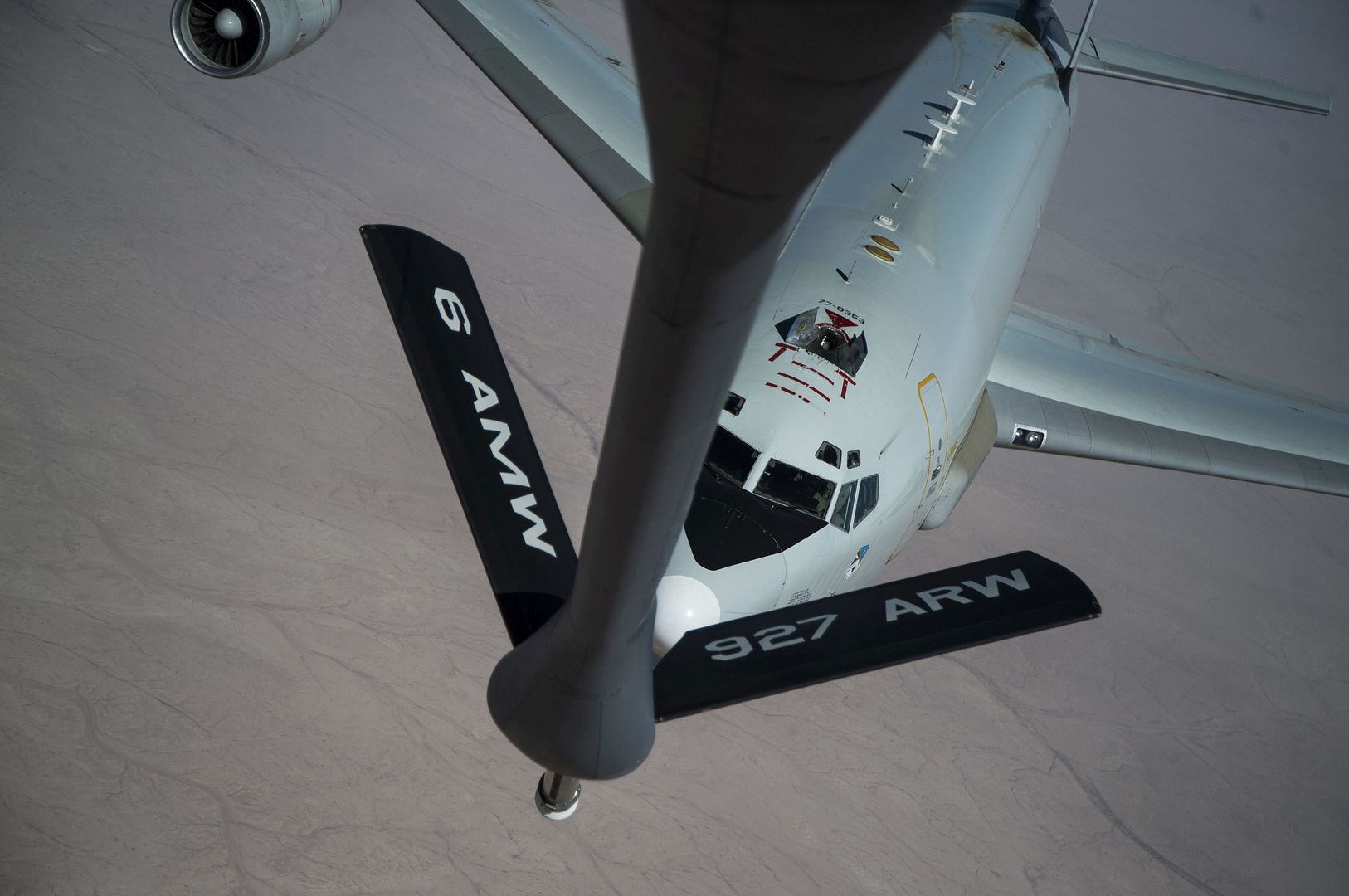
June 1, 2016 Toronto Commercial Aircraft, Press Release
Bombardier Commercial Aircraft announced today that Calgary-based WestJet Encore Ltd. has signed a firm order for nine Q400 turboprops. The transaction is a conversion of options booked by the airline?s parent company WestJet and will increase WestJet Encore?s fleet to 45 Q400 aircraft.
Based on the list price for the Q400 aircraft, the transaction is valued at $293 million US.
?Bombardier?s Toronto-built Q400 turboprop airliner has allowed us to expand from our Western Canada base to more and more communities from coast to coast across Canada and into the U.S. and welcome more guests to experience WestJet?s hospitality,? said Ferio Pugliese, President, WestJet Encore. ?These nine new superb Q400 aircraft will continue to grow our network.?
?In just three years WestJet Encore?s operations have grown from two Q400 aircraft serving just two cities, to 28 aircraft serving 36 destinations in Canada and the U.S. With this order, WestJet Encore has 17 aircraft still to be delivered which will allow further expansion of the airline?s network,? said Kevin Smith, Vice President, Regional Aircraft, Bombardier Commercial Aircraft. ?This continuing build-up of WestJet Encore?s fleet is a strong testimonial to the Q400 aircraft?s economics, reliability, flexibility and passenger appeal.?
About the Q400 Aircraft
Designed as a modern, 21st-century turboprop, the Q400 aircraft is the most recent development in the Q Series family of aircraft. It provides unmatched performance, operational flexibility and passenger comfort. In addition to the standard single-class configuration, Q400 aircraft are available with an optional dual-class interior for enhanced passenger comfort; in an optional extra-capacity configuration offering up to 90 seats for higher-density markets; and in a cargo-passenger combi configuration.
Thanks to its combination of turboprop attributes, jet-like features, industry-leading passenger experience and environmental footprint, the Q400 aircraft is exceptionally versatile and can be adapted to a variety of business models. By offering a 30 per cent reduction in fuel burn over the jets it often replaces, the Q400 aircraft radically reduces carbon emissions and increases cost efficiency. Its high-speed cruise -- 160 km/h faster than conventional turboprops -- places the aircraft?s flight time within minutes of jet schedules, at the same seat cost as larger single-aisle jets. Its large propellers operate at a lower RPM, generating more power with less noise and making it a friendly option for city centres.
The Q400 aircraft family includes over 60 owners and operators in almost 40 countries. The worldwide fleet has logged more than 6.9 million flight hours and has transported more than 429 million passengers. Long recognized as a high-value asset by operators, the Q400 aircraft is now also attracting growing interest from the leasing community.
Bombardier has recorded firm orders for a total of 556 Q400 aircraft.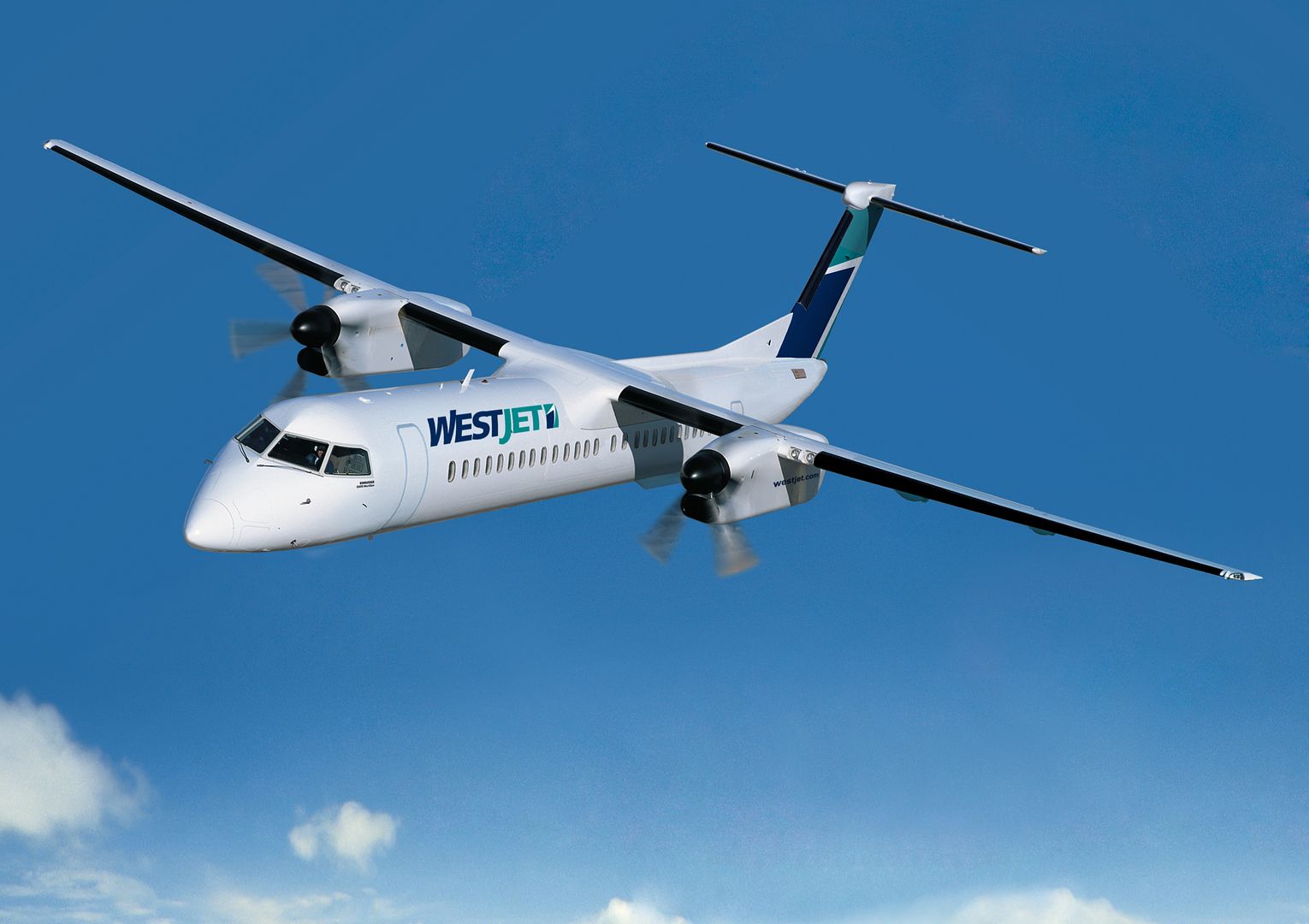
June 1, 2016 Montr?al Commercial Aircraft, Press Release
Bombardier Commercial Aircraft announced today that the C Series aircraft liveried in first operator Swiss International Airlines? (SWISS) colours will make its Irish debut in Dublin, Republic of Ireland ahead of the 72nd IATA Annual General Meeting (AGM) and World Air Transport Summit. The CS100 aircraft ? flight test vehicle five (FTV5) - will be featured on static display during the event and will be parked at the Dublin Airport where it will host visitors and media tours.
?As we approach first delivery and entry into service with launch operator SWISS next month, it?s our pleasure to be showcasing the CS100 aircraft to influential industry leaders in Dublin during this premier IATA event,? said Fred Cromer, President, Bombardier Commercial Aircraft. ?Our execution has been flawless in 2016 and as our teams focus on meeting our commitments, we?re taking every opportunity to update the industry on our progress and continue to promote the C Series aircraft worldwide.?
The first CS100 will be delivered to SWISS in June and is expected to enter service in July 2016.
About C Series Aircraft
The C Series family of aircraft, representing the fusion of performance and technology, is a 100 per cent all-new design that offers operators up to US $13 million extra value per aircraft.
By focusing on the 100- to 150-seat market segment, Bombardier has designed the C Series aircraft to deliver unparalleled economic advantage to operators and to open up new opportunities for single-aisle aircraft operations.
By employing advanced materials, state-of-the-art technologies and advanced aerodynamics, combined with the groundbreaking Pratt & Whitney PurePower? PW1500G engine, the C Series aircraft is delivering a greater-than 10 per cent unit cost advantage compared to similarly-sized,
re-engined aircraft.
In addition to delivering best-in-class economics with the C Series aircraft, Bombardier has placed considerable emphasis on cabin design to ensure a superior passenger experience. The aircraft offers 19-inch-wide seats that set a new industry standard, large overhead bins that accommodate a carry-on bag for each passenger, and the largest windows in the single-aisle market. Together these attributes create a widebody feel that offers passengers an unparalleled level of comfort.
The game-changing C Series aircraft offers the best-in-class environmental scorecard making it the quietest in-production commercial jet in its class. With a combination of outstanding short-field capability and a maximum range of up to 3,300 NM (6,112 km), the C Series aircraft is uniquely positioned for varied types of operations.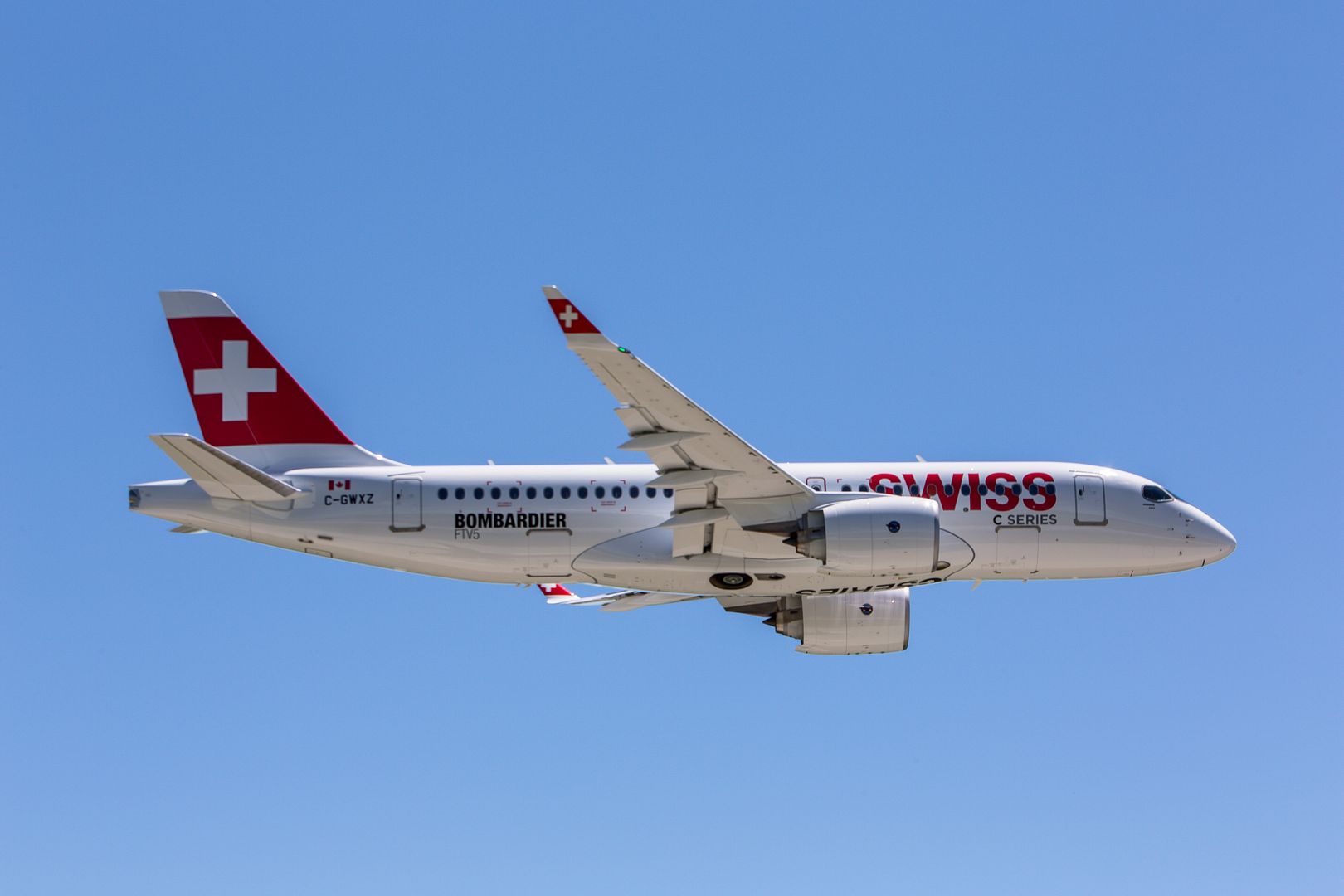
The first AgustaWestland AW101 Norwegian All-Weather SAR Helicopter was unveiled yesterday by Anders Anundsen, Norway?s Minister of Justice and Public Security, during a ceremony held at Leonardo Helicopters? Yeovil facility in south-west England.
Minister of Justice and Public Security, Anders Anundsen (on right in photo with Leonardo Helicopters CEO Daniele Romiti), said ?This roll out ceremony marks the accomplishment of a very important milestone. The helicopter that will be an important and crucial resource for the Norwegian rescue service is now complete and ready for testing. I am very pleased with the effort made by Leonardo Helicopters so far.?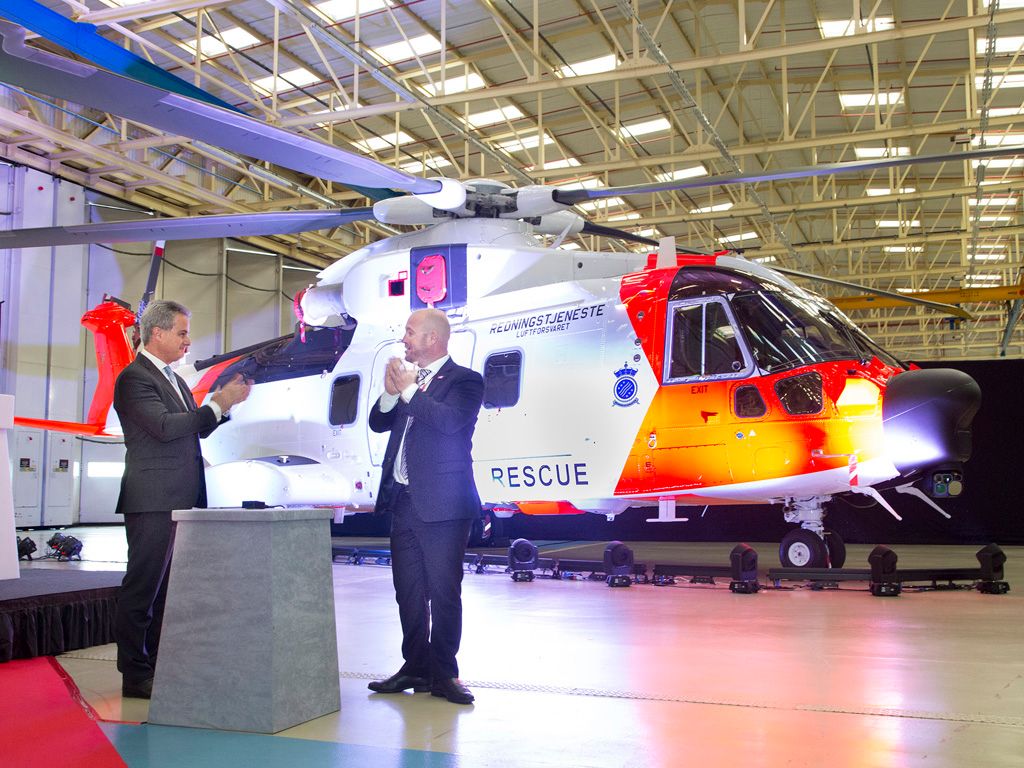
Aircraft deliveries to the Royal Norwegian Air Force will start in March 2017 and continue through to 2020. As part of the contract, a fifteen year ?turnkey? support solution will be delivered, comprising spares, technical support and training services.
The aircraft is equipped with an advanced SAR equipment package including Leonardo-Finmeccanica?s newly-launched Osprey AESA radar. Based around a flat-panel antenna design, Osprey is the world?s first lightweight airborne surveillance radar to be built with no moving parts and will provide a 360 degree field of view for crews. Other equipment includes a four-axis digital Automatic Flight Control System (AFCS), two rescue hoists, searchlight, electro optical device, mobile telephone detection system and a fully integrated avionics and mission system. Additionally, the aircraft is equipped with advanced systems that enhance flight safety including a Laser Obstacle Avoidance System (LOAM) and Obstacle Proximity LIDAR System (OPLS) which provide warnings of wires and other obstacles.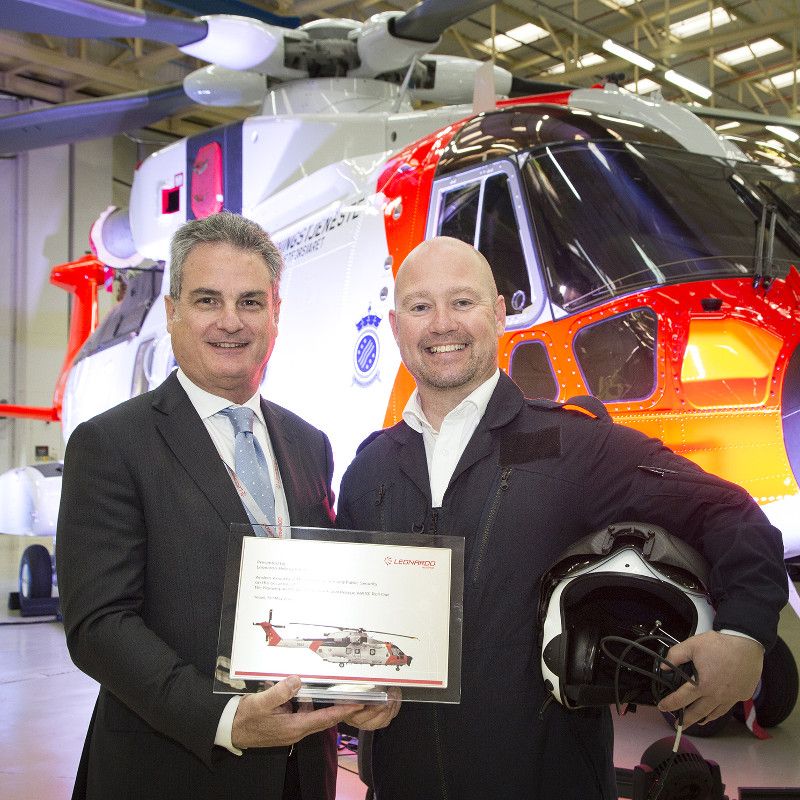
-
 Main Admin2 June 2016 Press Release
Main Admin2 June 2016 Press Release
Mumbai, India based GoAir has taken delivery of its first A320neo aircraft, becoming the world?s third operator to do so. The A320neo powered by Pratt and Whitney engines, is the first of 72 A320neo on order and joins GoAir?s existing fleet of 19 A320 aircraft.
The aircraft is configured in a conformable layout and is the first A320neo equipped with the innovative Spaceflex cabin configuration with 186 seats. GoAir currently flies to 22 Indian destinations. With the NEO induction, GoAir will expand its network and offer fliers better connectivity and continue its growth as one of India?s preferred low-cost airline.
GoAir?s first A320neo is the first of the type to be financed on a sale and leaseback through SMBC Aviation Capital.
The A320neo Family incorporates latest technologies including new generation engines and Sharklet wing tip devices, which together deliver more than 15 percent in fuel savings from day one and 20 percent by 2020 with further cabin innovations.
The A320neo Family is the world?s best-selling single aisle product line with over 4,500 orders from 82 customers since its launch in 2010 capturing almost 60 percent share of the market. Thanks to their widest cabin, all members of the A320neo Family offer unmatched comfort in all classes and Airbus? 18? wide seats in economy as standard. To date, seven A320neo aircraft have been delivered to three customers.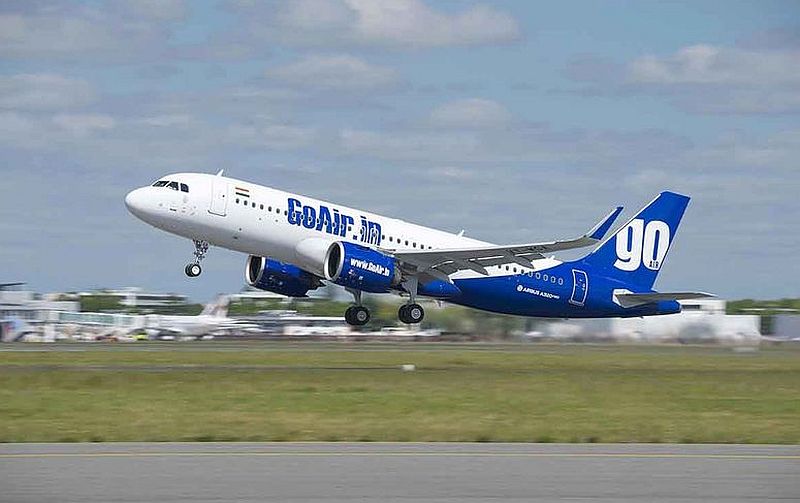
-
 Main AdminFort Worth, Texas, June 2, 2016 ? Lockheed Martin (NYSE: LMT) successfully completed the initial flight test of its T-50A configured aircraft. The T-50A is the company?s aircraft offering in the U.S. Air Force?s Advanced Pilot Training competition.
Main AdminFort Worth, Texas, June 2, 2016 ? Lockheed Martin (NYSE: LMT) successfully completed the initial flight test of its T-50A configured aircraft. The T-50A is the company?s aircraft offering in the U.S. Air Force?s Advanced Pilot Training competition.
?The aircraft in its new configuration with the 5th Gen cockpit and other upgrades performed flawlessly,? said Mark Ward, Lockheed Martin T-50A lead test pilot, after his flight in Sacheon, South Korea. ?I have no doubt this aircraft will close the gap which currently exists between the trainer fleet and 5th Generation fighters.?
The T-50A is low risk and ready now. It builds on the proven heritage of the T-50 with more than 100 T-50s flying today?100,000 flight hours and counting?and more than 1,000 pilots trained.
The T-50A is the only offering that meets all APT requirements and can deliver those capabilities on schedule at the lowest risk to the customer. Lockheed Martin teams studied clean-sheet alternatives and determined they pose prohibitive risk to APT cost and schedule requirements. The T-50A delivers the performance and capabilities needed to prepare pilots to fly, fight and win with 5th Generation fighter aircraft.
Lockheed Martin is currently standing up its T-50A Final Assembly and Checkout site in Greenville, South Carolina.
The T-50A was developed jointly by Lockheed Martin and Korea Aerospace Industries. The accompanying T-50A Ground-Based Training System features innovative technologies that deliver an immersive, synchronized ground-based training platform.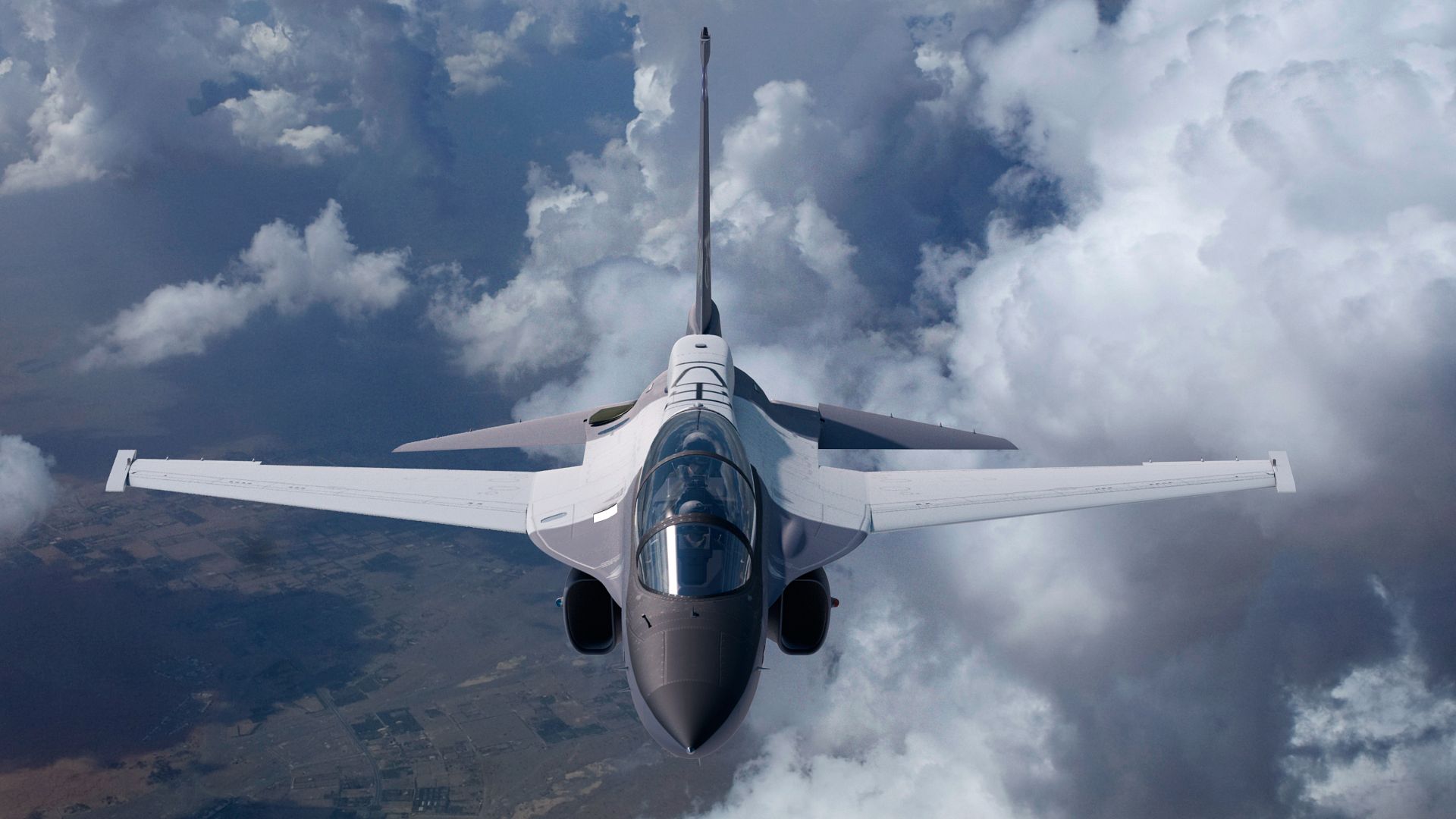
ROYAL AIR FORCE MILDENHALL, England (AFNS) -- Lewis Herron, a 100th Bombardment Group veteran, enlisted in the U.S. Army Air Corps when he was 18 years old. By the time he was 19, he was overseas dodging enemy fire.
?The first thing we did when we landed and parked the airplane was get out and count how many holes we had in it, either from fighters or from flak,? said the 90-year-old former staff sergeant. ?One day we counted 103 holes in our airplane.?
Danger zone
Stationed with the 350th Bomb Squadron at Royal Air Force Thorpe Abbots, near Diss, England, Herron was a tail gunner on the B-17 Flying Fortress bomber and flew 33 missions on his aircraft, nicknamed ?Heaven Sent.?
?The 100th Bomb Group performed a mission to Warsaw, Poland,? he recalled. ?We went in over Warsaw at 10,000 feet, dropping supplies to the Polish underground, but then we didn?t have enough gasoline to get back to England, so we flew on into Russia, landed there and spent the night.?
In a Skype interview April 20, the veteran described how the next morning he and the rest of his crew loaded up their aircraft with bombs, and deployed their ordnance on a railroad bridge in Budapest, Hungary, on their journey home.
?We got credit for two missions after that trip,? he said.
Each aircraft was accompanied by a nine-person crew made up of a bombardier, navigator, pilot, co-pilot, flight engineer, radio operator, ball turret gunner, waist gunner, and tail gunner. The same crew stayed together on all missions.
?When we got together and our crew was formed, the only ones who didn?t know exactly what they were going to be doing were the gunners. One of the other guys was real short, so I said he?d be a good one for the ball turret gunner, who sits underneath the airplane,? Herron said. ?The other two looked at me, and I said, ?Well, if nobody wants it, I?ll take the tail; I?d like to have that.? So it was my choice.?
Herron had an idea he?d be a tail gunner when he first joined the Army Air Corps.
?We were in training in the States, and every chance I?d get I?d crawl back to the tail of the airplane and ride back there,? he chuckled. ?I was kind of fascinated with being back there -- it was a good place to be, but of course it was one of the most dangerous places on the aircraft.?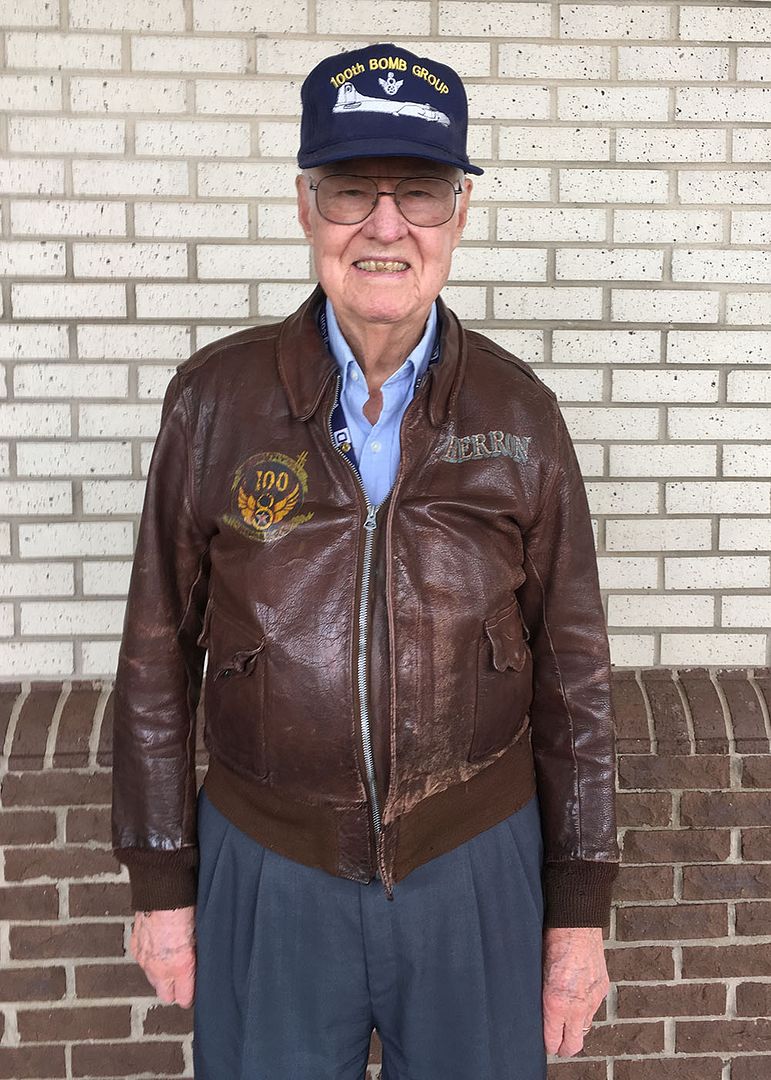
?We were in training in the States, and every chance I?d get I?d crawl back to the tail of the airplane and ride back there,? he chuckled. ?I was kind of fascinated with being back there -- it was a good place to be, but of course it was one of the most dangerous places on the aircraft.?
Boxed in
Being positioned in the rear of the B-17 meant the tail gunner was constantly squashed up in an extremely small space.
?The only way I could be in there was on my knees; I would kneel down and I had a seat that was tilted at an angle that I could rest my hips on,? he said. ?I had to be in the kneeling position to fly back there; it was that cramped. From the edge of my shoulders to the edge of the aircraft was about 6 to 8 inches; I was pretty much boxed in.?
The veteran then held up a photo taken in 2015 at a reunion for 100th BG members, which took place in Louisiana. The photo showed two square D tails, one with the original tail markings on a B-17, and the second displayed on one of the 100th Air Refueling Wing?s KC-135 Stratotankers.
?Right there in the back is where I was at; you can see the twin-50s (M2HB .50 caliber machine gun) that I fired,? he said, proudly.
Most of the missions, he said, lasted around nine hours.
?The one we made to Russia was 11 hours, 20 minutes -- that was the longest flight that we had,? Herron said. ?But I wasn?t back in the tail the entire time; that was the flying time.?
Service before self
The 100th BG suffered heavy losses, earning them their nickname of ?The Bloody Hundredth.?
Despite this, the men willingly continued to carry out the missions, knowing each time that this might be their last.
?That was always the thought -- will we make it back or not?? Herron recalled. ?We had some that were fairly easy and others that were extremely rough, but we always made it back every time. The hardest trip we ever had to make was to a synthetic oil refinery in Merseburg, Germany.
His very first combat mission was Aug. 26, 1944, to Ruhland, Germany. One memory from his early missions was of how cold it was.
?It was never less than 60-below-zero up there and our aircraft weren?t insulated or heated, so not only were you on oxygen for six or seven hours, you had all that dreaded cold which was pretty hard to take,? he said. ?We had electrically heated suits, like an electric blanket people have on their bed. That kept us fairly warm, but of course back in the tail of the aircraft where I was at were all the nooks and crannies of the aircraft -- it was like a wind tunnel back there.?
Today, the date of Sept. 11 brings to mind horrifying memories of terrorist attacks. Back in 1944, Sept. 11 also brought tragedy when the 100th BG sent up its usual 36 aircraft. Thirteen of those were from Herron?s squadron, the 350th Bomb Squadron.
All 13 got shot down.
?There were five (sets of) crew living in each of the barracks. The other four from our barracks flew that day, but we didn?t because we?d flown three days before and were supposed to fly three days after that. So they gave us a day of rest. We had 20 empty beds in our barracks that night,? Herron said. ?There had been 25 of us that had lived together for several months, and then all of a sudden 20 of them were gone.?
Below 29 December 1944: Two 390th BG B-17s are captured over Frankfurt by the strike camera of a 100th BG ship overhead. One of them being 43-38414 "Heaven Sent"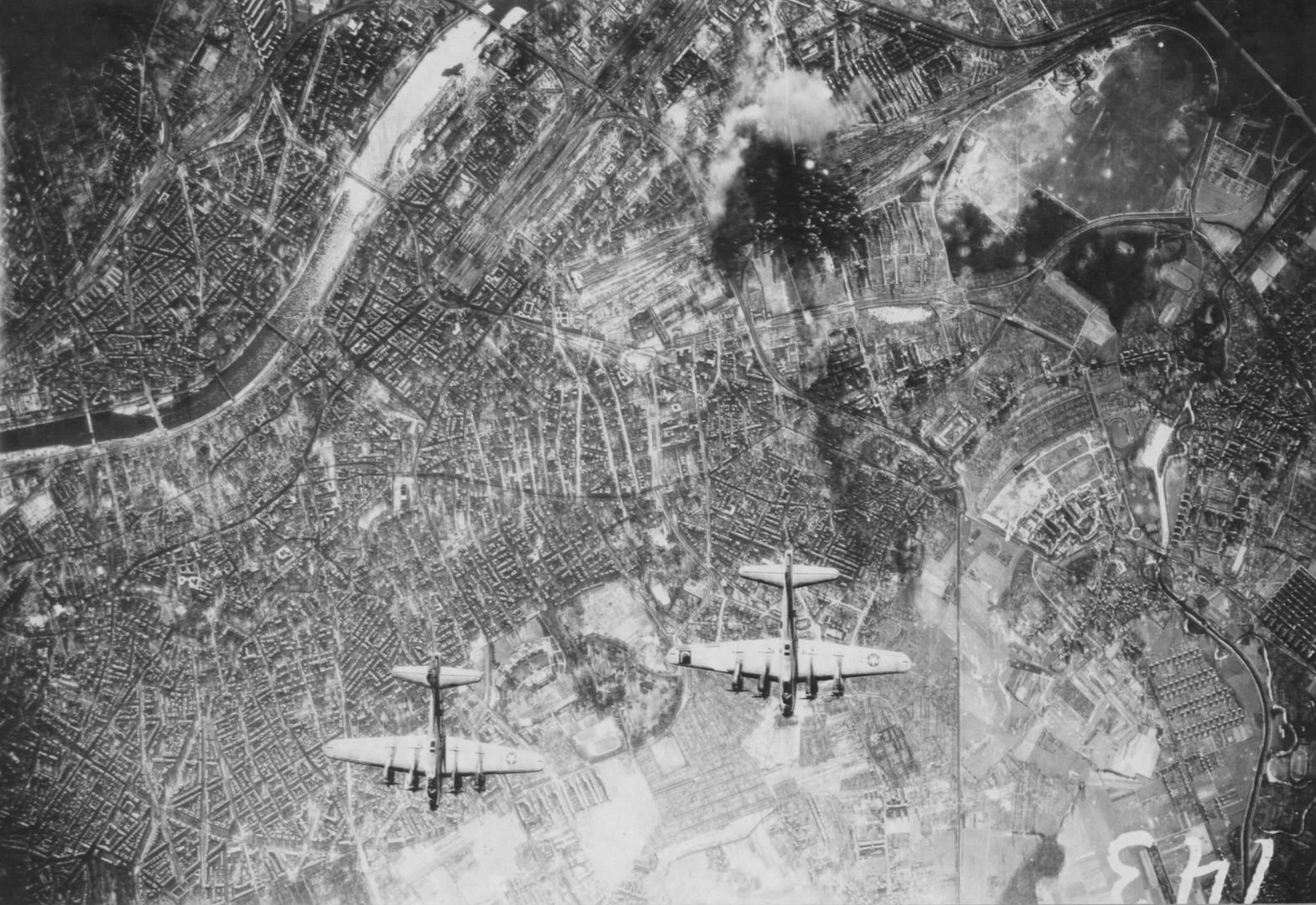
Price of freedom
Tragedy continued when the tail gunner and the rest of his crew flew a mission to Merseburg on Nov. 2, 1944.
?The 3rd Division went to Europe that day; we lost more than 40 aircraft over that one path. We didn?t get the job completely finished so we had to go back Nov. 27 and the anti-aircraft shot down 56 B-17s,? he said.
The former tail gunner explained that a bomb group formation was made up of 36 aircraft going up each day they flew a mission.
On Dec. 30, 1944, the 100th BG flew a mission to Hamburg, Germany. This time, 10 of the 36 aircraft were shot down.
Herron said as they flew each mission, he and the rest of his aircrew tried to concentrate on just getting the job done and getting back home again, though it was always in the back of their minds that they might not make it out alive.
Royal Air Force Mildenhall?s KC-135s, which proudly bear the square D heritage symbol on their tail, don?t carry parachutes. Back in the days of the B-17, parachutes were carried on board.
?They were a chest-type chute; you had the harness on but the parachute itself was down by the side of you,? Herron explained. ?I would reach over and grab mine, then snap it on before I got ready to bail out.
?We also had canteen cups we used for drinking our coffee in the mess hall, and sometimes I would take mine out to the airplane with me right before I was ready to go out on a mission, and would put it down by my side where I sat,? he continued. ?One day, this piece of shrapnel came up from the bottom of the airplane and made a big hole in the canteen cup. It rattled around and scared me to death.?
On returning to base, the tail gunner went straight to the supply sergeant to ask for a replacement.
?He asked me why, so I held it up and said, ?It won?t hold coffee anymore,?? he said, laughing. ?The sergeant told me that before I could get a new one, I had to turn the old one in -- but I told him, ?No, I?m keeping that as a souvenir.??
Herron said he kept that canteen cup for 50 years, before finally donating it to the National Museum of the Mighty Eighth Air Force in Savannah, Georgia.
Honoring the past
Another part of the shared heritage between the 100th ARW and 100th BG is Maj. Robert ?Rosie? Rosenthal. The 100th Operations Group auditorium was renamed in May 2012 after the man who also happened to be Herron?s squadron commander.
?He was a great guy. He only had to fly 25 missions, and once he?d completed them he let the boys go home. But then he said, ?Give me a new crew -- I want to keep flying,? Herron said, adding Rosie flew a total of 52 missions.
?By that time he was a squadron commander and got to pick and choose; but he wouldn?t pick the easy missions, he would only pick the hard ones,? he continued. ?So when they came in at 2 a.m. to wake us up to fly a mission, the first question we would ask was, ?Who?s leading the group today?? If they said it was Rosie, we would groan because it was going to be a bad, bad mission.?
The tail gunner?s final mission -- he flew 33 -- was Jan. 10, 1945.
In a way to honor its heritage, the 100th ARW is the only flying unit that bears the historical markings of the 100th BG and Bloody Hundredth on its aircraft.
?It makes me feel real good, it really does,? Herron said, his voice breaking with emotion. ?I?m real proud of the fact they still kept the 100th Bomb Group designation -- that?s quite a treat and an honor, I think, to still have a logo up in the air today.?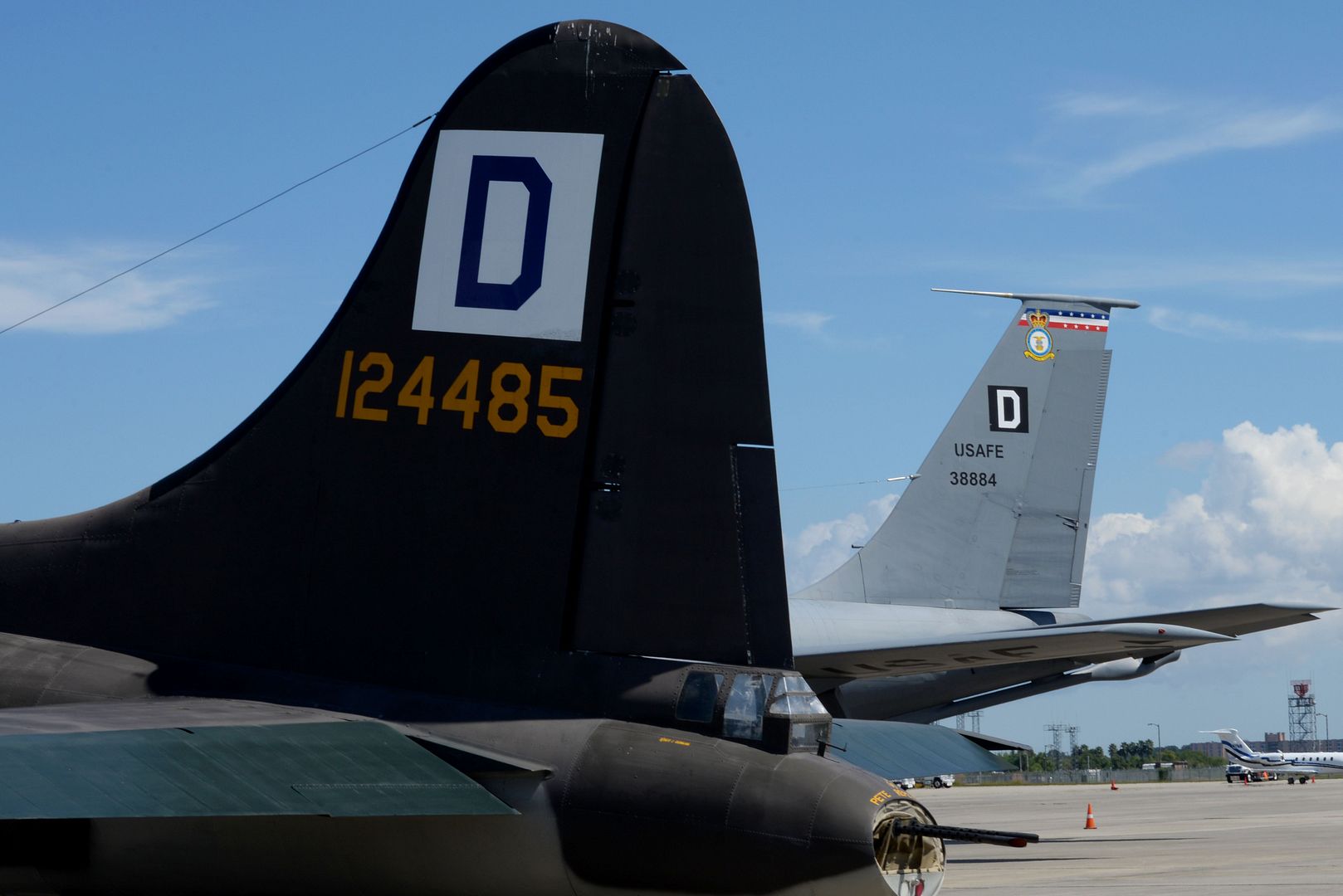
-
9 years ago
 Level 1A320neo with CFM LEAP-1A engine receives EASA and FAA airworthiness type certification
Level 1A320neo with CFM LEAP-1A engine receives EASA and FAA airworthiness type certification
Airbus has received joint airworthiness type certification for its A320neo aircraft equipped with CFM International's LEAP-1A engine from European Aviation Safety Agency (EASA) and US Federal Aviation Administration (FAA).
The CFM LEAP-1A engine is the second engine option for A320neo aircraft. After receiving the latest certification, Airbus will now be able to deliver the first A320neo equipped with CFM LEAP-1A engine type in middle part of this year.
The certification follows six months from the initial certificate of airworthiness received from the EASA and FAA for the A320neo equipped with the Pratt & Whitney engine, the other engine option for the A320neo family. The first A320neo was delivered in January this year.
Airbus president and CEO Fabrice Br?gier said: "This key milestone for the A320neo programme, and its second engine option, the specially developed LEAP-1A, is a double seal of approval by the two major international governing bodies and comes after the A320neo Family had successfully accomplished a rigorous programme of certification trials."
The company noted that the two LEAP-powered aircraft assigned to the flight test campaign have already flown more than 1,000 flight hours in over 350 flights, which include 150 flight hours completed with the same aircraft in an airline-like environment to ensure operational maturity at entry to service.
Certification of the remaining aircraft or engine variants with LEAP engines will follow over the next few months. Upon completion of all the flight testing, the NEO development fleet with both engine options will achieve a combined total of 3,000 flight hours. The A320neo family of aircraft feature new engine technologies, Sharklet wing-tip devices and cabin innovations, as well as accommodate 100 to 240 passengers.
Since its launch in December 2010, the A320neo family has received more than 4,500 orders from at least 82 customers worldwide. -
 Main AdminA B-52 Stratofortress from Minot Air Force Base, ND, arrives June 2, 2016, at Andersen AFB, Guam. The aircraft is deployed in support of U.S. Pacific Command?s Continuous Bomber Presence operations. This forward deployed presence demonstrates continuing U.S. commitment to stability and security in the Indo-Asia-Pacific region. The U.S. military has maintained a deployed strategic bomber presence in the Pacific since March 2004, which has contributed significantly to regional security and stability. (U.S. Air Force photo by Airman 1st Class Alexa Ann Henderson/Released)
Main AdminA B-52 Stratofortress from Minot Air Force Base, ND, arrives June 2, 2016, at Andersen AFB, Guam. The aircraft is deployed in support of U.S. Pacific Command?s Continuous Bomber Presence operations. This forward deployed presence demonstrates continuing U.S. commitment to stability and security in the Indo-Asia-Pacific region. The U.S. military has maintained a deployed strategic bomber presence in the Pacific since March 2004, which has contributed significantly to regional security and stability. (U.S. Air Force photo by Airman 1st Class Alexa Ann Henderson/Released)
A B-52 Stratofortress from Minot Air Force Base, ND, prepares to touchdown June 2, 2016, at Andersen Air Force Base, Guam. The aircraft is deployed in support of U.S. Pacific Command?s Continuous Bomber Presence operations. This forward deployed presence demonstrates continuing U.S. commitment to stability and security in the Indo-Asia-Pacific region. These aircraft and the men and women who fly and support them provide a significant capability that enables U.S. readiness and commitment to deterrence, provides assurances to allies, and strengthens regional security and stability in the Indo-Asia-Pacific region. (U.S. Air Force photo by Airman 1st Class Alexa Ann Henderson/Released)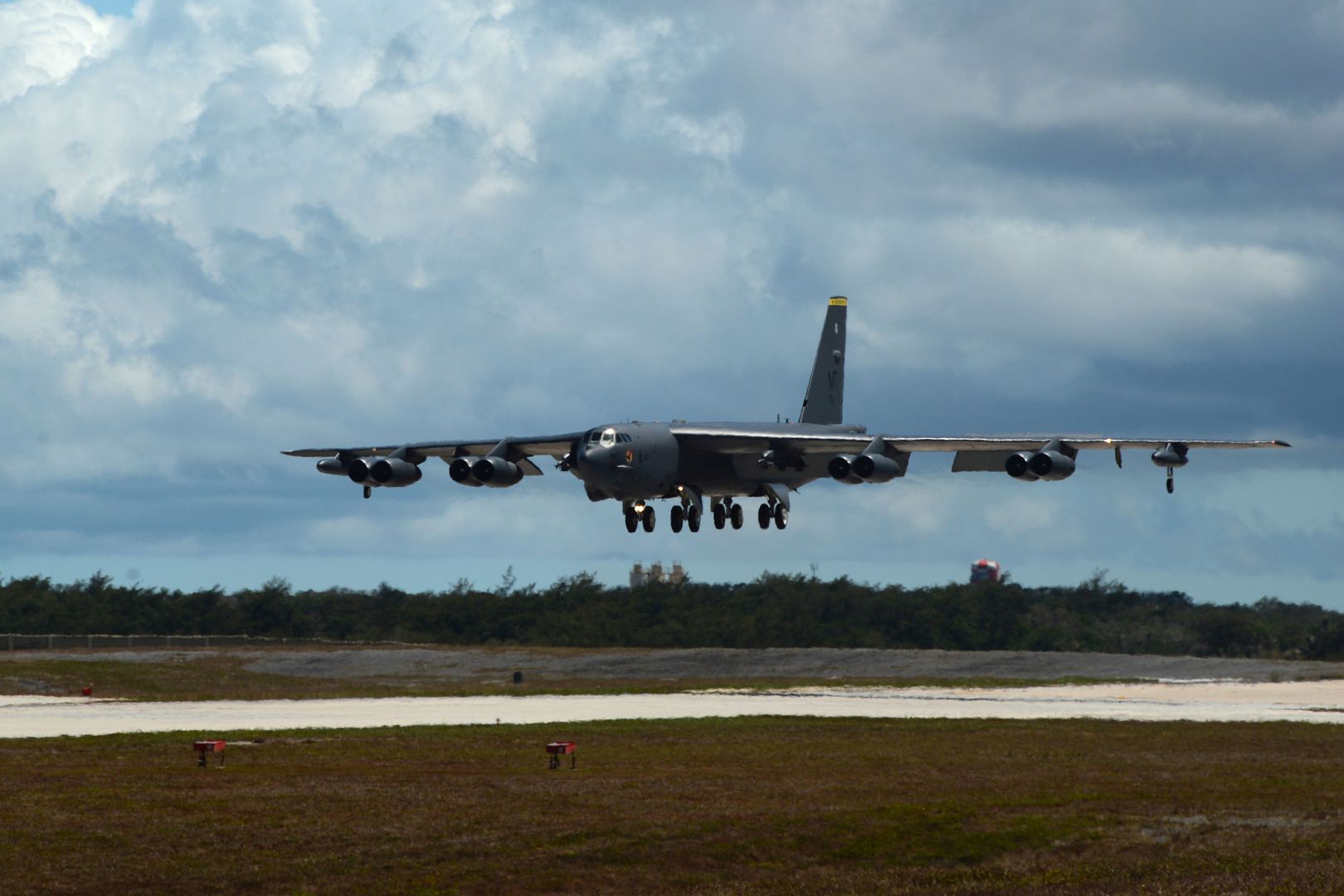
A B-52 Stratofortress from Minot Air Force Base, ND, is marshalled in June 2, 2016, at Andersen Air Force Base, Guam. The aircraft and crew are deployed in support of the Continuous Bomber Presence, which is designed to demonstrate U.S. commitment to the Indo-Asia-Pacific region and enhance regional security. (U.S. Air Force photo by Airman 1st Class Alexa Ann Henderson/Released)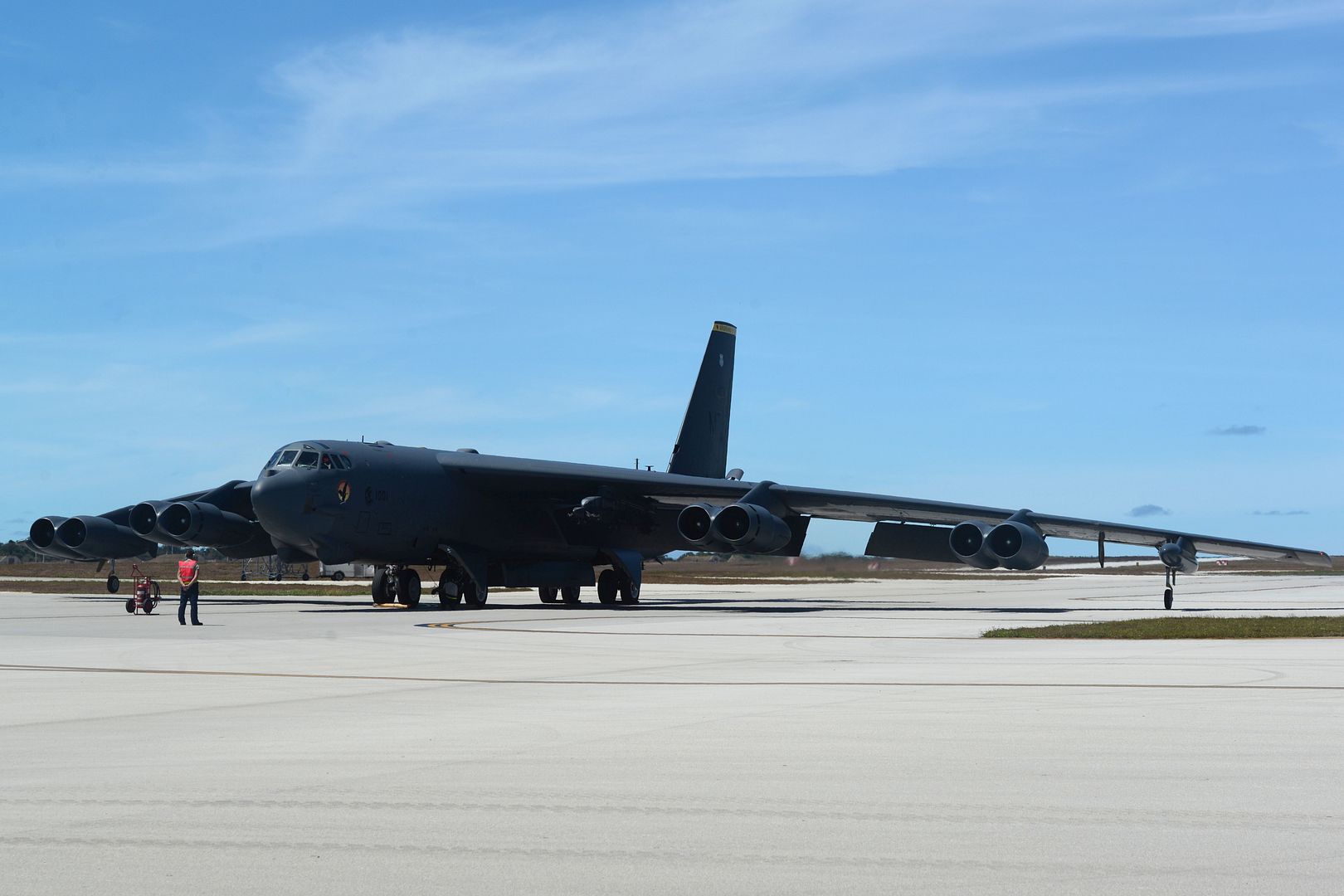
A B-52 Stratofortress and crew arrives June 2, 2016, at Andersen Air Force Base, Guam. The aircraft is deployed in support of U.S. Pacific Command?s Continuous Bomber Presence operations. Deployments such as this provide opportunities to advance and strengthen alliances as well as strengthen long-standing military-to-military partnerships. (U.S. Air Force photo by Airman 1st Class Alexa Ann Henderson/Released)
03 June 2016
News articles by date
The Puma 2 has been deployed in support of Operation TORAL for 15 months and over the last month has seen its busiest period to date.
Between 23 April and 22 May the Pumas moved 1950 passengers and 3890kg of freight in 208 hours of flying, which is 20% above their normal hours. The increase was largely down to the change over of personnel on Operation TORAL (known as a RIP) and an increase in routine tasking.
The Pumas provide support to a multitude of nations that all contribute to Operation RESOLUTE SUPPORT, within which the UK?s tasks form Operation TORAL. There are a number of coalition bases across Kabul and the Puma, along with the other coalition air assets, is vital in ensuring that personnel and equipment can move across the area as required.
The personnel within the detachment are mostly from RAF Benson in Oxfordshire and deploy as a formed unit, working together both in the UK and overseas.
The Chief of Staff said: ?In my 4 months here this has been the busiest period of tasking and with the burden of significant restrictions on road moves it has placed more emphasis on personnel moving by air. This coupled with the harsh environment, which puts pressure on the serviceability of the aircraft, shows what a great job the aircrew, engineers and support staff have been doing here.?
Editor: Flt Lt Rhian Watts
Photographs: Cpl Tony Rogers
Puma 2 helicopters from Royal Air Force Benson in Oxford are currently serving in Kabul, Afghanistan. The helicopter provide transport and support to coalition personnel based in and around Kabul.
-
 Main AdminROYAL AIR FORCE FAIRFORD, England (AFNS) -- With the sharp screech of rubber meeting asphalt, two B-52 Stratofortress bombers from Minot Air Force Base, North Dakota, touched down June 2 at Royal Air Force Fairford.
Main AdminROYAL AIR FORCE FAIRFORD, England (AFNS) -- With the sharp screech of rubber meeting asphalt, two B-52 Stratofortress bombers from Minot Air Force Base, North Dakota, touched down June 2 at Royal Air Force Fairford.
For the third year in a row the bombers have deployed to RAF Fairford to participate in bilateral training exercises. This year marks an integration with allied military forces through U.S. European Command?s exercises Baltops 16 and Saber Strike 16, as well as U.S. Africa Command?s exercise Just Hammer.
?During this short-term deployment, the strategic bombers are scheduled to conduct training flights with ground and naval forces around the region and participate in multinational exercises,? said Air Force Col. Kieran Denehan, the 5th Expeditionary Operations Group commander. ?The bombers will integrate into several exercise and real-world activities, including air intercept training, mining operations, inert ordnance drops and close air support.?
Using RAF Fairford, which normally operates as a lean base within the scope of the 501st Combat Support Wing, as a strategic hub for these exercises, the bomber crews have a unique opportunity to integrate and train with U.S. service members, allies and partners in a multitude of operations.
?The ability to integrate strategic bomber forces in a variety of missions is key to ensuring the U.S. is able to honor our security commitments,? Denehan said. ?This deployment to RAF Fairford is about participating in long-standing exercises and conducting necessary training within the region.?
RAF Fairford?s unique strategic location, capabilities, facilities and ability to transform from a lean base to an active, operational installation, makes it a key location for large-scale exercises and readiness operations.
?With the second longest flightline in the United Kingdom, we have an airfield that can accommodate a B-52 with no stress on the pavement,? said Frank Dailey, the 420th Air Base Squadron site director at RAF Fairford. ?Out of our 55 wide-body parking spots, 43 have the ability for on-the-spot hydrant refueling, which allows for quicker sortie turnarounds.?
Throughout the exercises, RAF Fairford will host the bombers, along with about 250 Airmen from Air Force Global Strike Command, and U.S. Air Forces in Europe and Air Forces Africa.
The training is designed to build and strengthen partnerships across the continent, as well as ensure interoperability with NATO allies and partners to remain strong and focused on a shared commitment to peace and global security.
U.S. Strategic Command routinely deploys bombers to both the EUCOM and U.S. Pacific Command areas of responsibility to train and integrate with allies and partners, while also demonstrating the ability to maintain command and control of the bomber force anywhere in the world. The most recent deployment of B-52s to Europe was in March in support of exercises Cold Response and Serpentex.
6/3/2016 - HILL AIR FORCE BASE, Uah -- The 4th Fighter Squadron "Fightin' Fujins" flew a "fini" flight May 31 at Hill Air Force Base, Utah. A fini flight signifies a final flight and was significant for many Fujins as they transition to the F-35A Lightning II. The 4th FS is one of three squadrons in the 388th Fighter Wing. All of the squadrons will eventually transition to flying the F-35 and the wing is expected to reach full operational capability with 78 jets in 2019.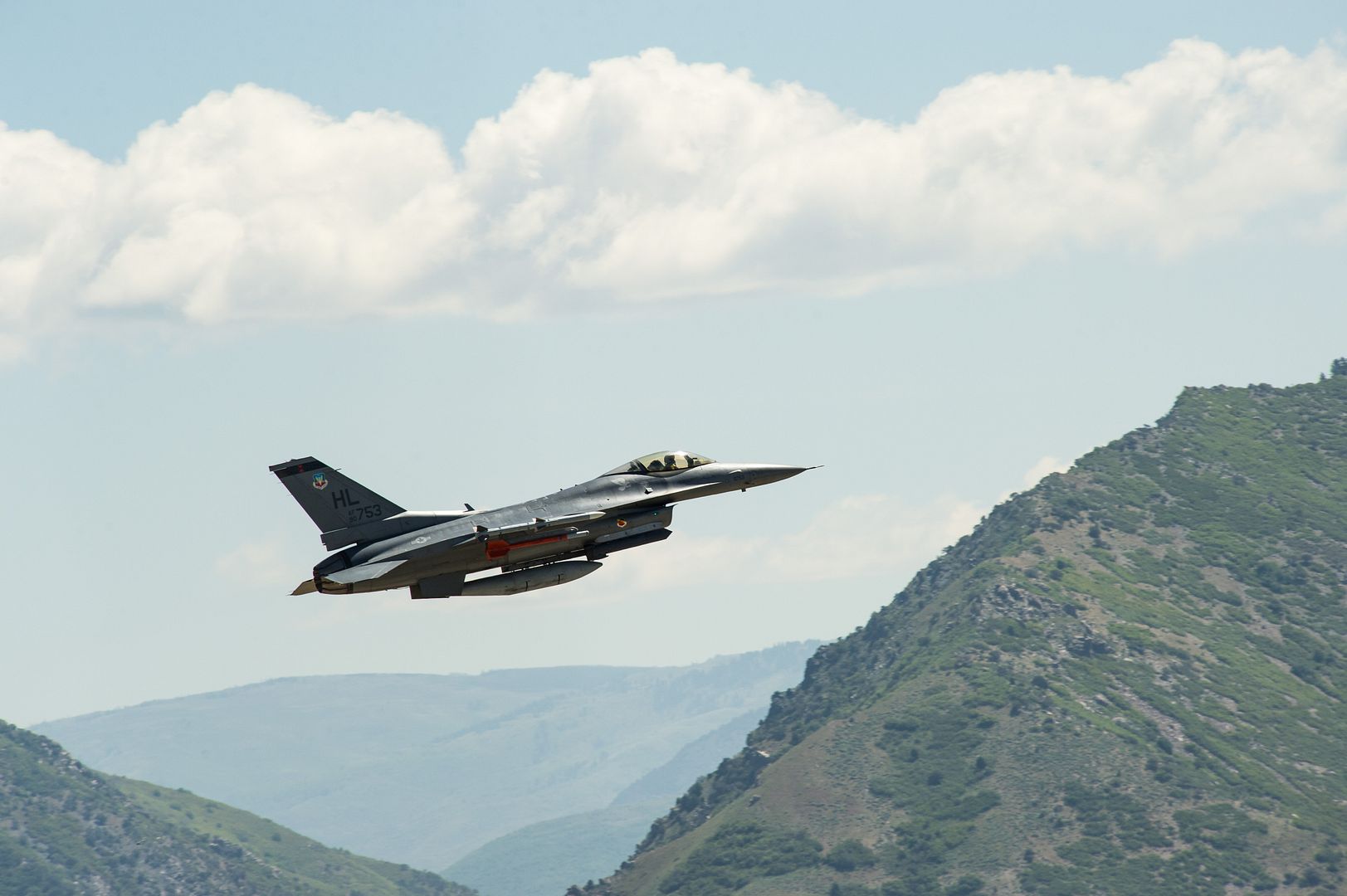
An A-10C Thunderbolt II assigned to the 75th Fighter Squadron performs a low-angle strafe during the 2016 Hawgsmoke competition at Barry M. Goldwater Range, Ariz., June 2, 2016. Hawgsmoke took place over the course of two days and included individual and team scoring of strafing, high-altitude dive-bombing, Maverick missile precision and team tactics. (U.S. Air Force photo by Senior Airman Chris Drzazgowski/Released)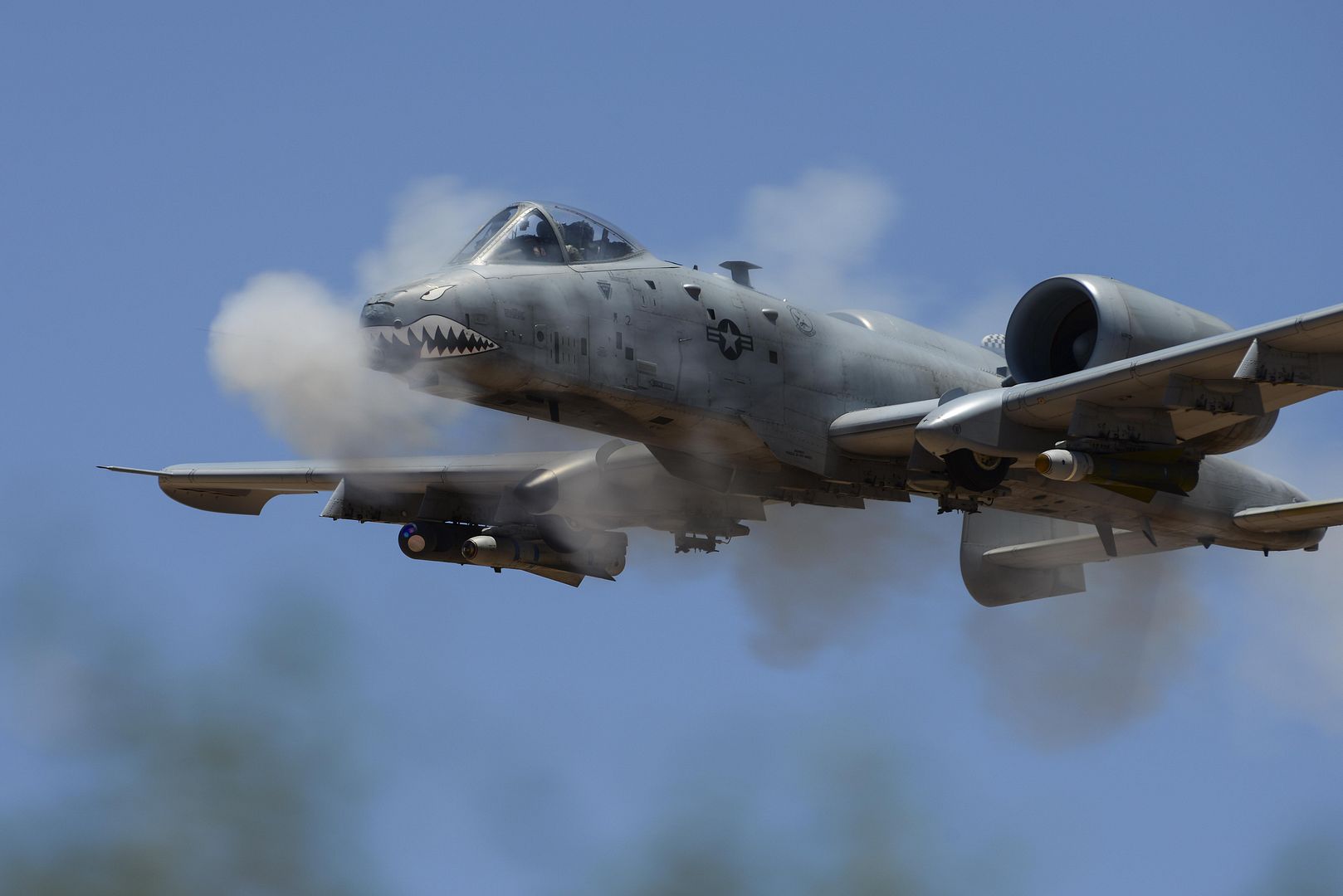
An A-10C Thunderbolt II assigned to the 23rd Fighter Group, Moody AFB, Ga., banks left after performing a low-angle strafe during the Hawgsmoke 2016 competition at the Barry M. Goldwater Range, Ariz., June 2, 2016. The competition took place over the course of two days and included individual and team scoring of strafing, high-altitude dive-bombing, Maverick missile precision and team tactics. (U.S. Air Force photo by Senior Airman Chris Drzazgowski/Released)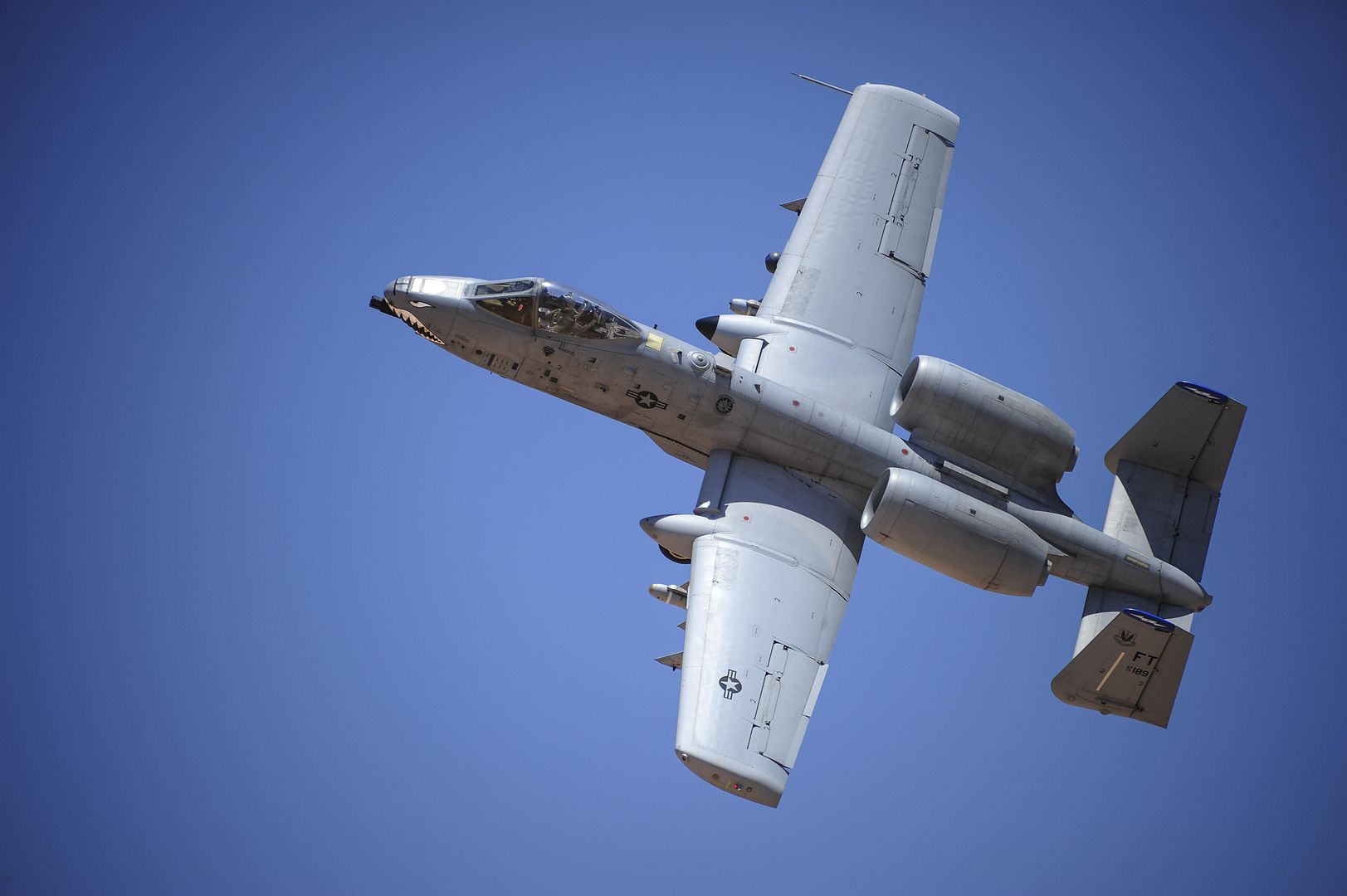
An A-10C Thunderbolt II assigned to the 23rd Fighter Group, Moody AFB, Ga., performs a flying maneuver during the 2016 Hawgsmoke competition at Barry M. Goldwater Range, Ariz., June 2, 2016. The first Hawgsmoke competition began in 2002 where A-10 units across the globe competed in ground attacks and target destruction. (U.S. Air Force photo by Airman 1st Class Mya M. Crosby/Released)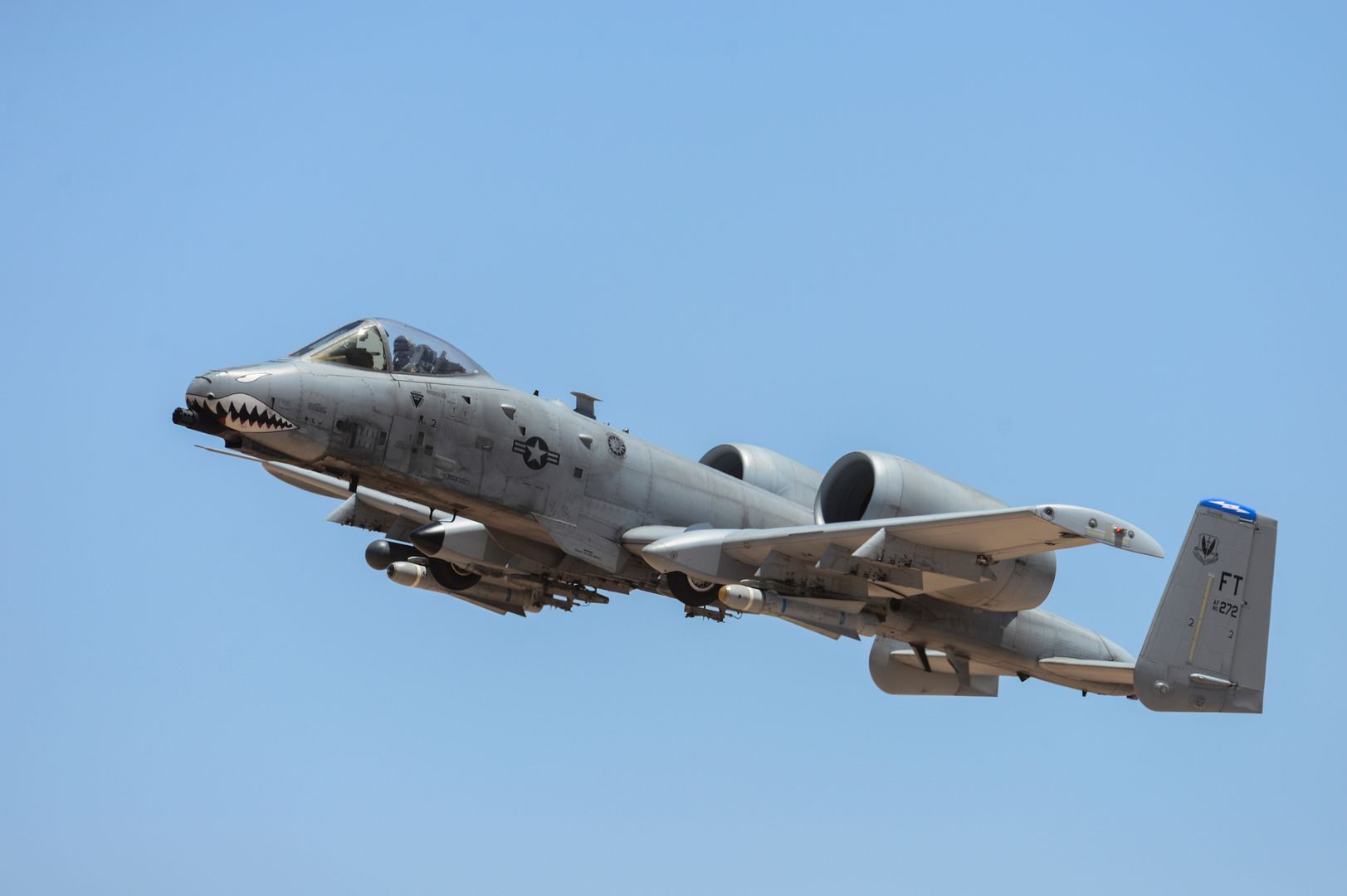
French Air Force M2000 Mirage fighters and Royal Canadian Air Force CC-130J Hercules transports prepare for take off as a CC-177 Globemaster takes off from the runway behind them during EXERCISE MAPLE FLAG at 4 Wing Cold Lake, Alberta on June 1, 2016.
United States Marine Corps refuelling crews park beside a Discovery Air Defence Services Alpha Jet while French Air Force M2000 Mirage Fighters and a Royal Canadian Air Force CC-177 Globemaster taxi down the runway behind them during Exercise MAPLE FLAG at Cold Lake, Alberta on May 31, 2016.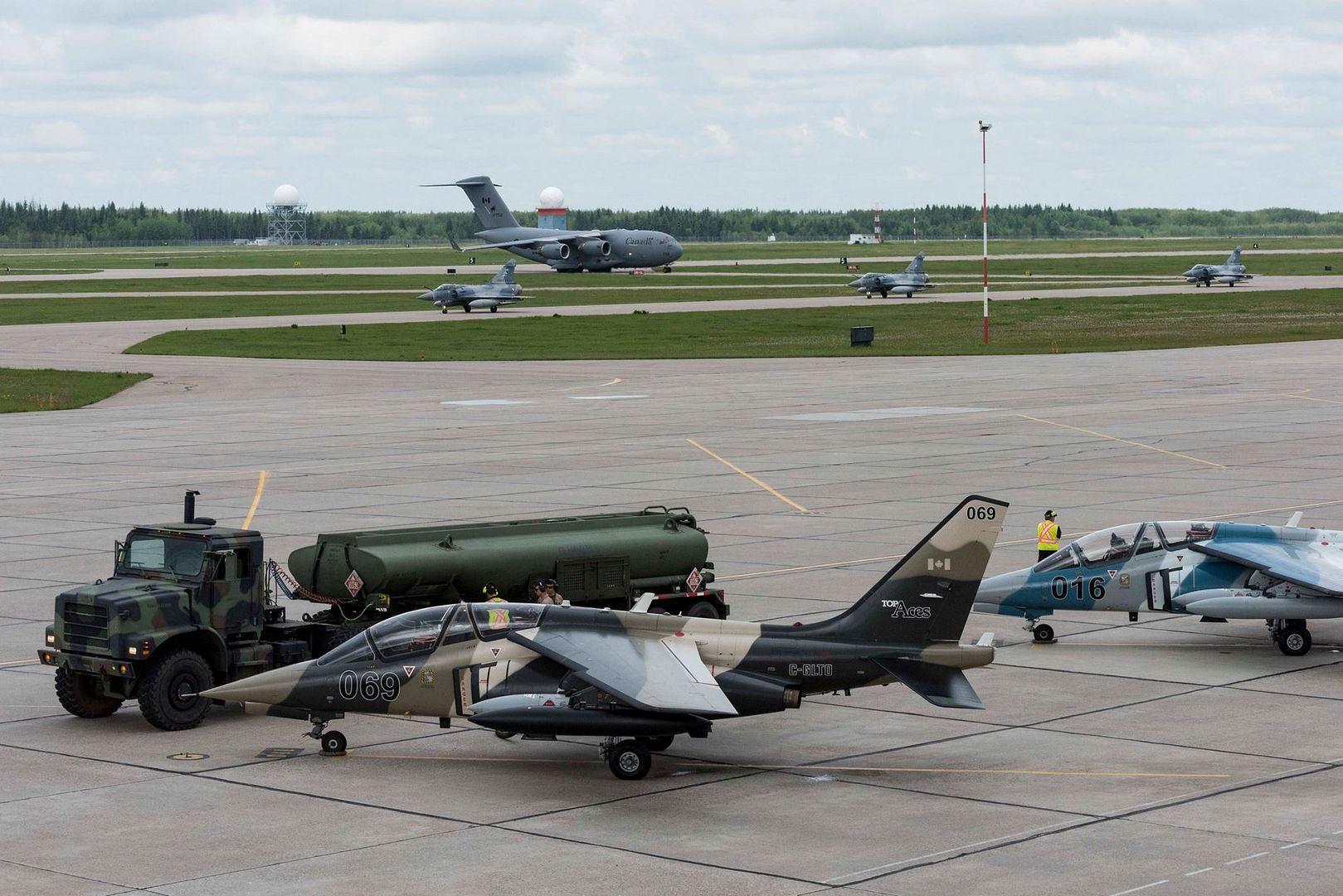
A CH-149 Griffon from the Aerospace Engineering Test Establishment (AETE) parks on the runway while a French Air Force M2000 Mirage fighter lands on the runway during Exercise MAPLE FLAG at Cold Lake, Alberta on May 31, 2016.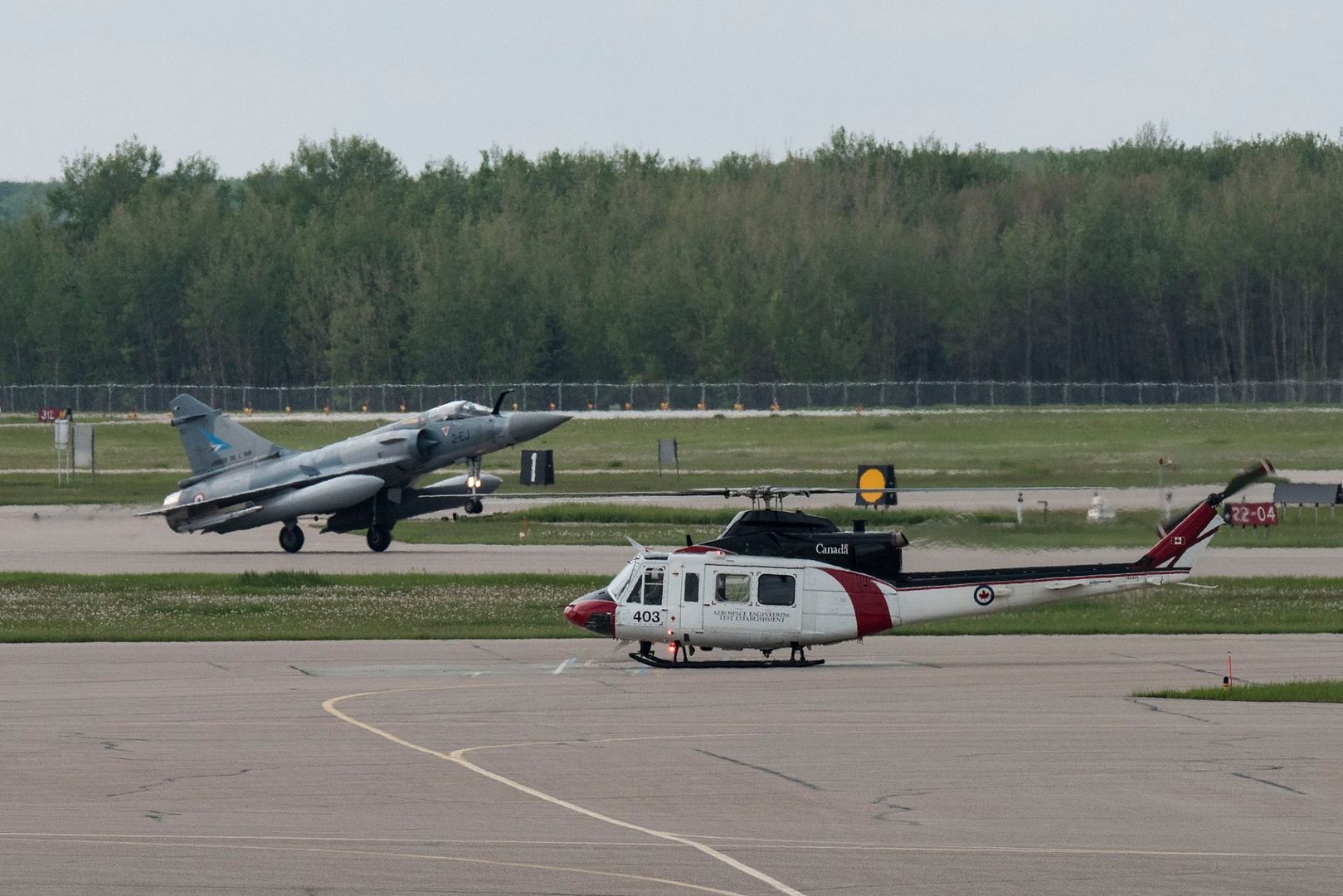
A French Air Force M2000 Mirage fighter and a Royal Canadian Air Force CC-177 Globemaster taxi down the runway during Exercise MAPLE FLAG at Cold Lake, Alberta on May 31, 2016.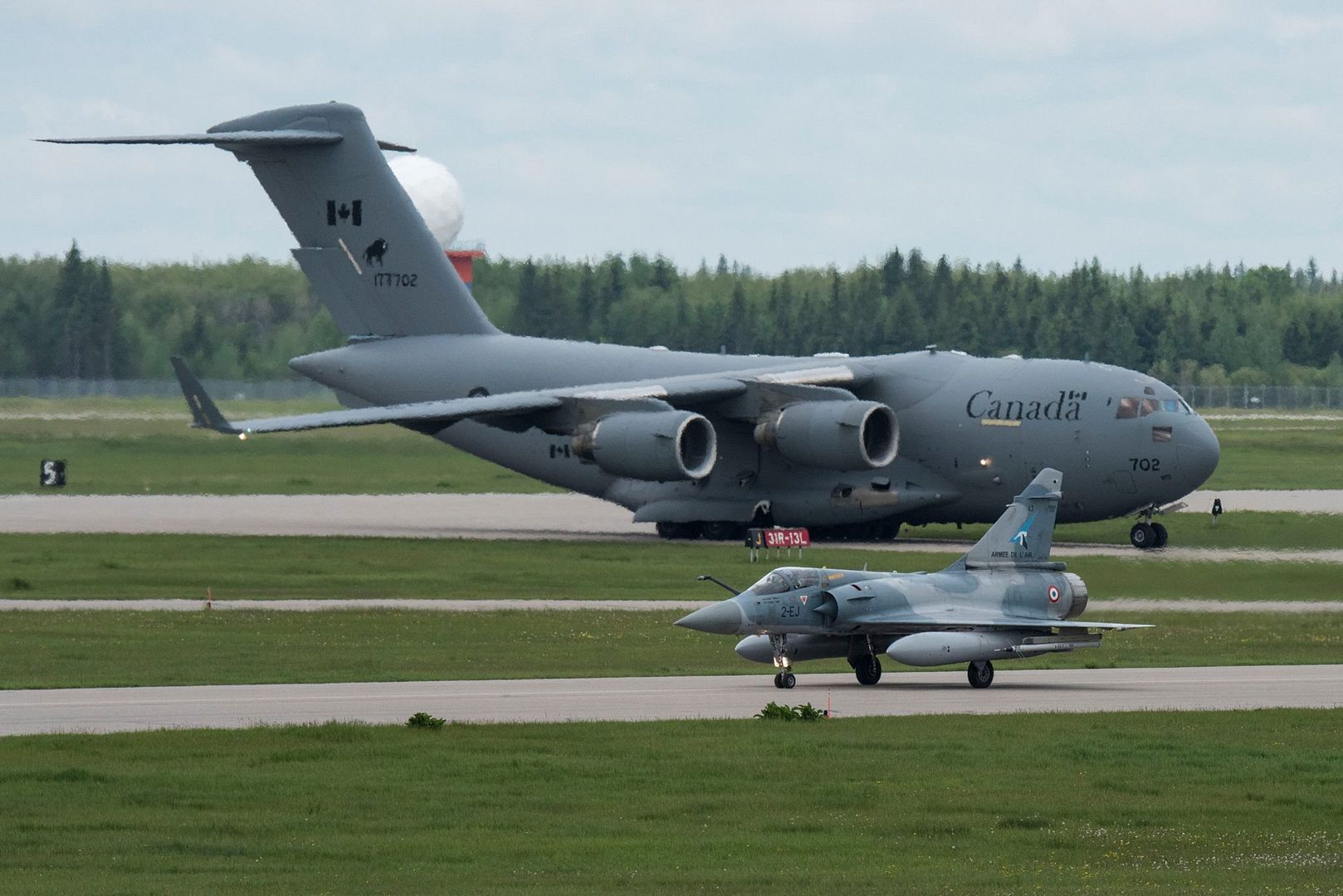
-
 Main AdminNews Article / June 3, 2016
Main AdminNews Article / June 3, 2016
Royal Canadian Air Force
In honour of 419 ?City of Kamloops? Squadron?s 75th anniversary, the squadron unveiled their newly painted CT-155 Hawk during a ceremony on June 2, 2016, at 4 Wing Cold Lake, Alberta.
The paint scheme was designed by artist Jim Belliveau of 4 Wing, and captures snapshots of the Second World War history of this highly decorated unit. The aircraft is a CT-155 Hawk from the fleet of NATO Flying Training in Canada (NFTC) Hawk trainers used to teach fighter lead-in training in Cold Lake, Alberta, the current home of 419 Squadron and the Moosemen, as they have been affectionately known since Second World War. NFTC contractor CAE agreed to facilitate the painting in honour of the anniversary.
?Today is a proud day for the Moosemen,? said Lieutenant Colonel Mike ?Moose? Grover, 419 Squadron?s commanding officer. ?I must sincerely thank Jim Belliveau for designing the paint schema, the Flying Colours Corporation paint team in Peterborough, Ontario, and CAE for their financial and maintenance support in completing this project.
?This amazing colour bird represents something far greater than just our 75th anniversary; it signifies how the Royal Canadian Air Force respects its heritage and history and ensures that future generations continue to honour the sacrifices and contributions that so many veterans have made before us.?
The camouflage scheme is a stylized application of the classic Second World War Bomber Command topside green and brown, combined with an all-black undersurface that masked the aircraft from below against the night sky when most wartime bombing operations occurred for the Allied effort. The call letters VR-W and the dedication of the aircraft on the nose (with yellow ?W?) are rooted with the Wellington Bomber flown by Wing Commander John ?Moose? Fulton, the first and beloved commanding officer of the unit in 1941.
The Moose insignia on the nose and registration KB799 belong to the Lancaster era of 419 Squadron, and the oldest known ?Moose? nose art for the unit. The roundels on the wings are a stylized combination of old style Royal Canadian Air Force (RCAF) wartime markings with the addition of a Maple Leaf in the centre to link the wartime era markings to that of today, while the fin flash and side roundels are wartime RCAF.
As ?City of Kamloops? squadron, 419 is holding a reunion weekend July 8 to 10, 2016, in Kamloops, British Columbia as part of their 75th anniversary celebrations and to celebrate their relationship with the city. A revival of the ?Moose? Fulton Club, a history book release, a Freedom of the City parade, a flypast and astatic aircraft display, will all take place over the weekend, culminating with a formal dinner on Saturday night.
419 Squadron, located at 4 Wing, is a satellite unit of 15 Wing Moose Jaw, Saskatchewan, the centre of RCAF aircrew training.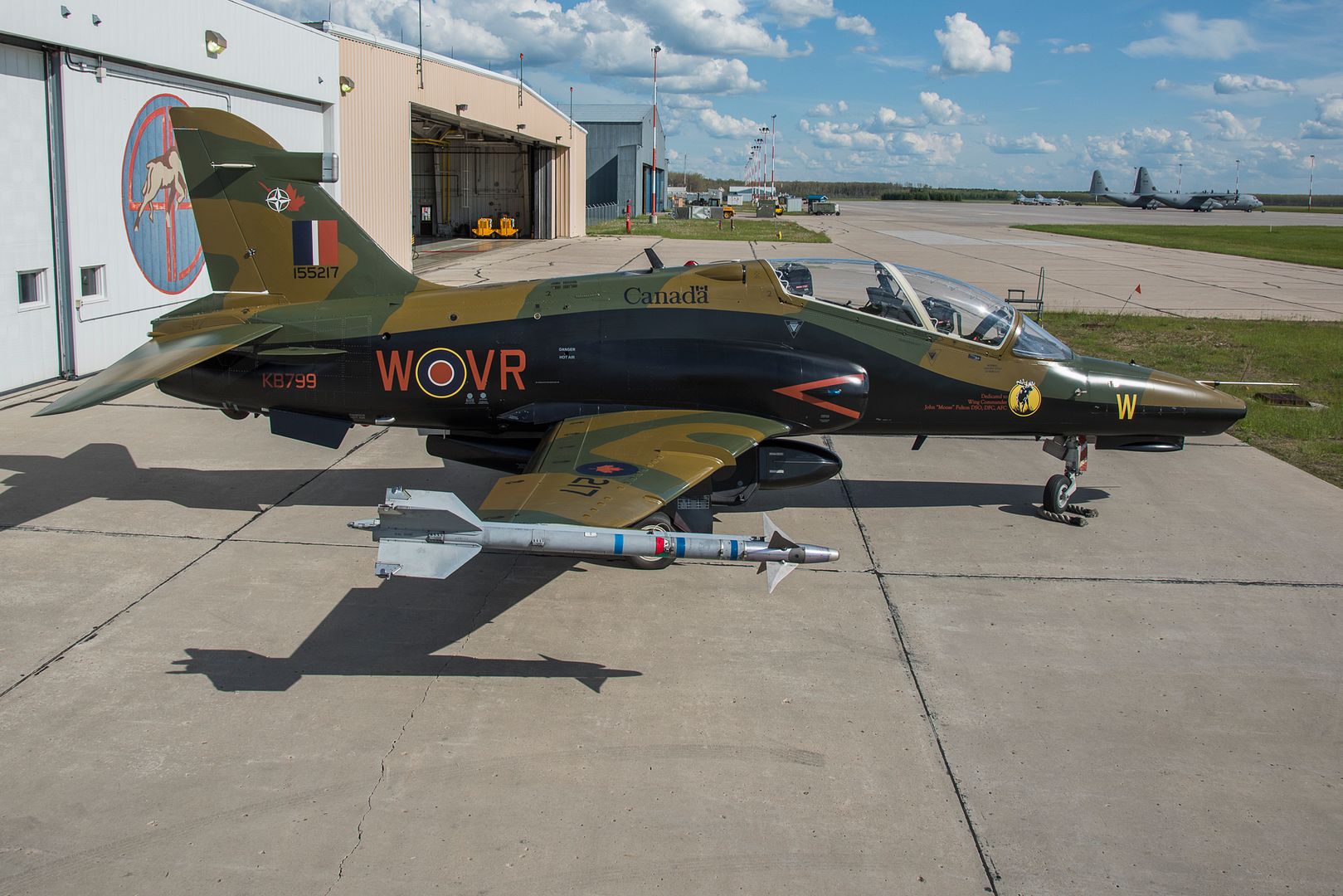
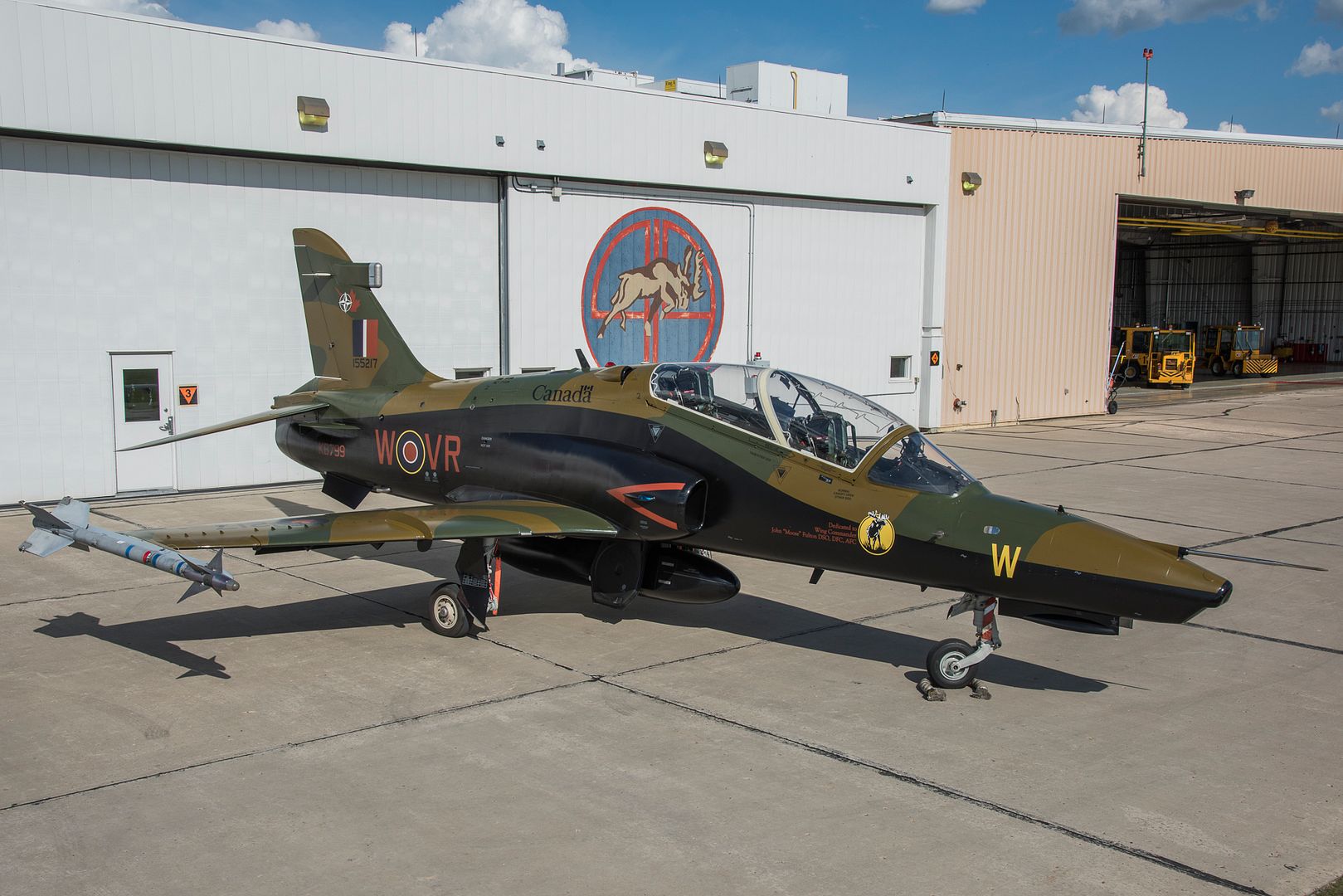
6/3/2016 - HILL AIR FORCE BASE, Utah -- Eight F-35A aircraft and 160 personnel from Hill Air Force Base will depart this week for rigorous operational testing at Mountain Home Air Force Base, Idaho, through June 17. This marks the first time Hill's operational F-35s will travel out of state for training.
The F-35A pilots and maintainers from Hill's active duty 388th Fighter Wing and Reserve 419th Fighter Wing will push the aircraft to their limits to simulate deployed operations and ensure the Air Force's newest fighter aircraft are performing as expected.
"Mountain Home is an ideal location for our first off-base exercise because it allows us to fully test the deployment capability of the unit and the aircraft while remaining close enough to Hill for home station support if needed," said Lt. Col. Curtis Pitts, commander of the 419th Operations Group, detachment 1.
"We're going to do our best to stress our entire system while at Mountain Home," said Maj. Luke Harris, deployment project officer and F-35A pilot with the 34th Fighter Squadron. "Our biggest focus areas are the number of sorties we can generate, the number of sorties that may be lost, loading and employing our weapons, and finding any unique issues with the F-35A."
The Air Force's first operational F-35 arrived to the 388th FW's 34th FS in September 2015. The 419th OG, detachment 1 is a contingent of Reserve F-35 pilots who fly in partnership with the 34th FS.
During roughly eight sorties a day, three key F-35A mission sets will be tested: suppression and destruction of enemy air defense, air interdiction missions, and basic close air support to include alert launches. Each is required to reach Initial Operational Capability, Harris said.
A declaration of IOC means the Air Force has deemed the F-35A combat-capable. Right now, all indications point to the aircraft reaching IOC at Hill later this year.
"Since the aircraft's arrival last fall there have been too many milestones to count and we're making great progress," said Lt. Col. George Watkins, 34th FS commander. "The Mountain Home deployment marks another significant milestone in validating the F-35A's capabilities as we pursue IOC."
In February Hill F-35 pilots dropped laser-guided bombs at the Utah Test and Training Range in Utah's west dessert, marking the first time these weapons were employed by a combat-coded unit. In May, Hill's F-35 pilots began flying routine four-ship configurations. More than 500 F-35A sorties have been launched from the Hill AFB runway to date.
Hill's fleet of F-35 aircraft has also received lightning protection and anti-ice modifications, and pilots are now using the lightweight "Gen-3" helmet.
In addition to its advanced stealth capability, the F-35A is designed to gather, fuse, and distribute more information than any fighter in history.
The base will be home to three operational F-35 fighter squadrons with a total of 78 aircraft by the end of 2019. The 388th and 419th FWs fly and maintain the Air Force's newest fighter aircraft in a Total Force partnership, which capitalizes on the strength of both components.
by Kari Tilton
419th Fighter Wing Public Affairs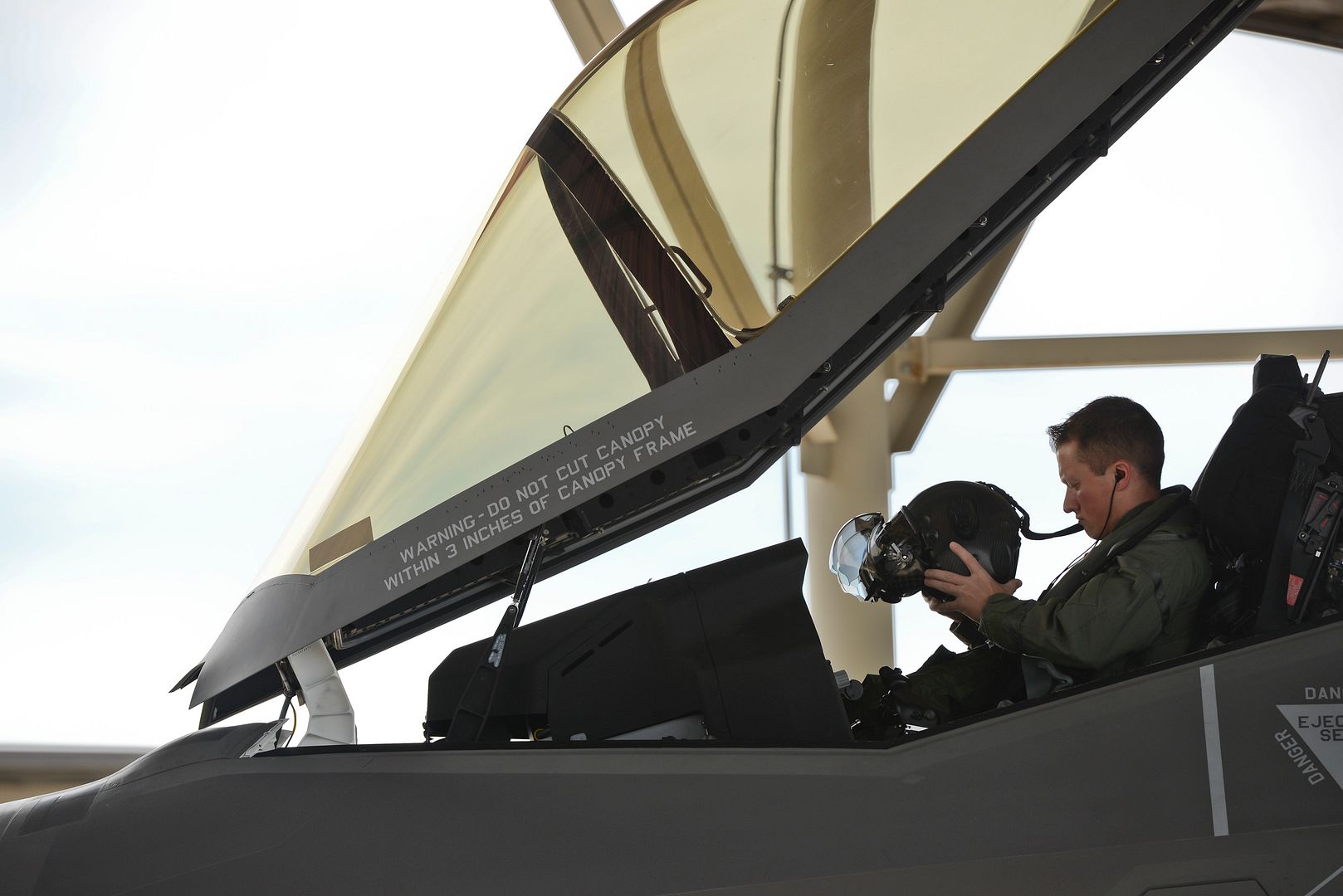
Capt. Derek Kirkwood, a pilot assigned to the 34th Fighter Squadron, dons his helmet in the cockpit of an F35A Lightning II aircraft April 22 at Hill Air Force Base, Utah. The sortie, the first F-35A 4-ship generation at the base, was part of a cross-ramp exercise and was a major test for the active duty 388th Fighter Wing and Reserve 419th Fighter Wing. The exercise helped identify process deficiencies before testing the F-35's operational agility at Mountain Home AFB, Idaho, in June. (U.S. Air Force photo by Paul Holcomb)
-
9 years agoMon Jun 06 2016, 09:25pm
 Main AdminJune 6, 2016 Montr?al Commercial Aircraft, Press Release
Main AdminJune 6, 2016 Montr?al Commercial Aircraft, Press Release
Bombardier Commercial Aircraft announced today the successful completion of a C Series aircraft demonstration flight carrying senior executives from about twenty Star Alliance member airlines and media representatives. The historic flight of the innovative C Series aircraft, which features state-of-the-art technologies, departed Dublin at the conclusion of the 2016 Annual General Meeting of the International Air Transport Association (IATA) on June 3, 2016.
The CS100 airliner carrying 100 passengers, along with six Bombardier crew members, was operated by Bombardier?s crew and featured the livery of launch customer Swiss International Air Lines (?SWISS?). With the passengers, their luggage and fuel on board, Bombardier confirmed to passengers that its calculations indicated the aircraft could have flown direct from Dublin to Montr?al. The one hour and 50 minutes ride from Dublin to Zurich consumed 20 per cent less fuel than competing single-aisle aircraft currently flying that route.
?It was a pleasure to welcome our fellow Star Alliance Chief Executive Board members to Zurich in this special year, having flown on a very special aircraft ? the Bombardier C Series ? for which SWISS is the launch customer,? said Thomas Kl?hr, Chief Executive Officer, SWISS. ?We are really looking forward to welcoming the CS100 into our fleet when we take delivery in a few weeks.?
?The IATA conference was a wonderful opportunity to showcase the C Series aircraft to leaders of the world?s major airlines,? said Fred Cromer, President, Bombardier Commercial Aircraft. ?Along with our friends at Star Alliance we were able to offer their member airlines a unique and exclusive opportunity to fly aboard the CS100 aircraft from Dublin to Zurich.
?As we approach first delivery and entry-into-service with launch operator SWISS, showcasing the CS100 aircraft to Star Alliance members and media provided them with first-hand experience of the C Series aircraft?s flight deck and cabin in operation. The quiet, steep take-off and climb out to 37,000 feet (11,278 metres) impressed us all and the feedback has been overwhelmingly positive and complimentary - all in anticipation of the aircraft entering commercial service this summer. Our business case for the C Series aircraft is coming to fruition and we are confident that our strategic plan is on track,? added Mr. Cromer.
About C Series Aircraft
The C Series family of aircraft, representing the fusion of performance and technology, is a 100 per cent all-new design that offers operators up to US $13 million extra value per aircraft.
By focusing on the 100- to 150-seat market segment, Bombardier has designed the C Series aircraft to deliver unparalleled economic advantage to operators and to open up new opportunities for single-aisle aircraft operations.
By employing advanced materials, state-of-the-art technologies and advanced aerodynamics, combined with the groundbreaking Pratt & Whitney PurePower? PW1500G engine, the C Series aircraft is delivering a greater-than 10 per cent unit cost advantage compared to similarly-sized,
re-engined aircraft.
In addition to delivering best-in-class economics with the C Series aircraft, Bombardier has placed considerable emphasis on cabin design to ensure a superior passenger experience. The aircraft offers 19-inch-wide seats that set a new industry standard, large overhead bins that accommodate a carry-on bag for each passenger, and the largest windows in the single-aisle market. Together these attributes create a widebody feel that offers passengers an unparalleled level of comfort.
The game-changing C Series aircraft offers the best-in-class environmental scorecard and is the quietest in-production commercial jet in its class. With a combination of outstanding short-field capability and a maximum range of up to 3,300 NM (6,112 km), the C Series aircraft is uniquely positioned for varied types of operations.
About Star Alliance
Star Alliance is a global airline network which was established on May 14th, 1997 by five airlines, Air Canada, Lufthansa, Scandinavian Airlines, THAI and United.
It was the first truly global airline alliance to offer worldwide reach, recognition and seamless service to the international traveller. Its acceptance by the market has been recognised by numerous awards, including the Air Transport World Market Leadership Award, Best Airline Alliance by both Business Traveller Magazine and Skytrax. The member airlines are: Adria Airways, Aegean Airlines, Air Canada, Air China, Air India, Air New Zealand, ANA, Asiana Airlines, Austrian, Avianca, Avianca Brasil, Brussels Airlines, Copa Airlines, Croatia Airlines, EGYPTAIR, Ethiopian Airlines, EVA Air, LOT Polish Airlines, Lufthansa, Scandinavian Airlines, Shenzhen Airlines, Singapore Airlines, South African Airways, SWISS, TAP Portugal, Turkish Airlines, THAI and United.
Together more than 430,000 employees serve over 640 million passengers a year. With a modern combined fleet of more than 4,600 aircraft, the Star Alliance member airlines offer 18,500 daily flights to 1,330 airports in 192 countries.
Paratroopers from France, Germany and the 82nd Airborne Division jumped into Sainte-Mere- Eglise, France on June 5, 2016 to commemorate the 72nd Anniversary of D-Day. The Soldiers were greeted with love and hospitality by the people of the Normandy region. U.S. Army photo by Capt. Joe Bush)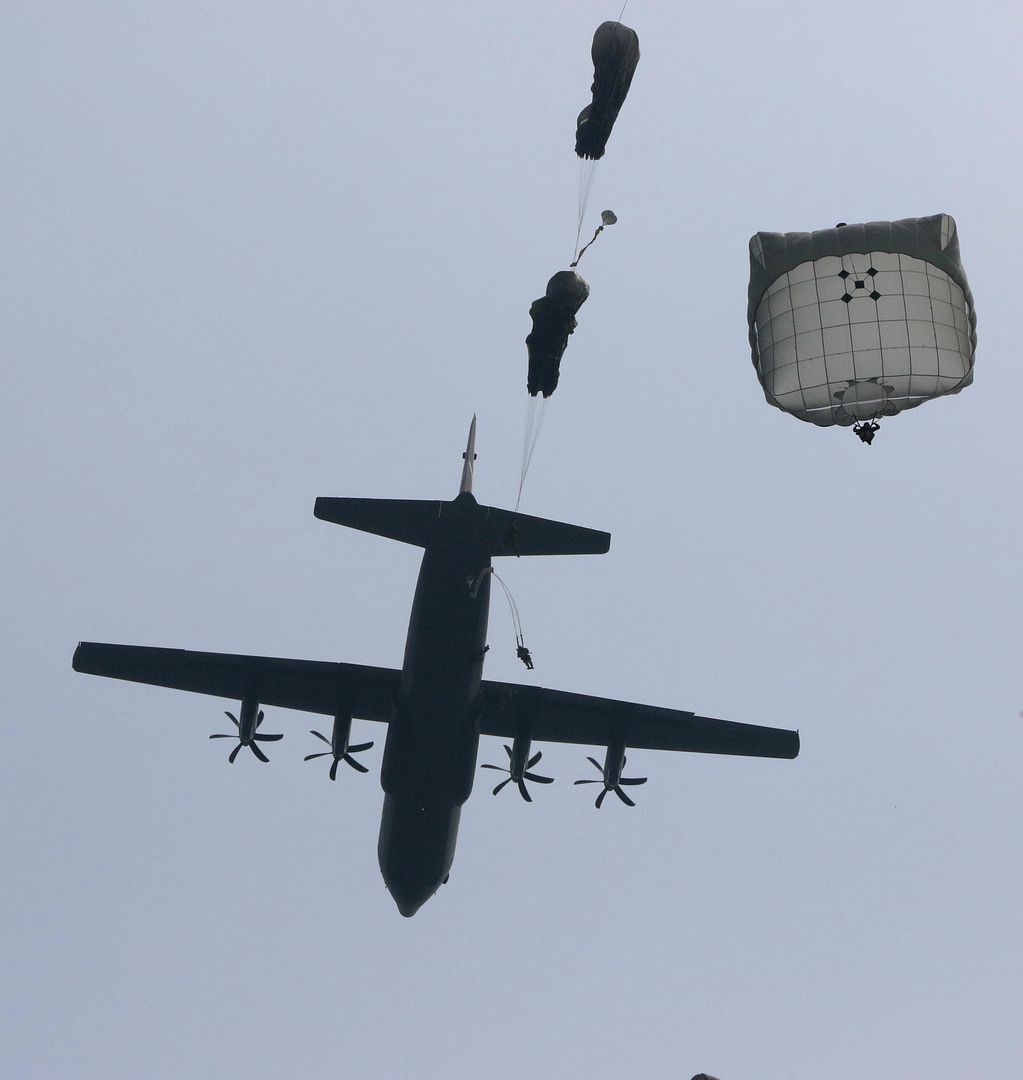
A Coast Guard C-130 from Air Station Elizabeth City, North Carolina, and a Mobile Communication Vehicle from Communications Command in Chesapeake, Virginia, are shown at the airport in St. George's, Grenada, June 6, 2016. The MCV, a large, robust communication asset used for emergency and national communication support, was transported to Grenada for Tradewinds 2016. U.S. Coast Guard photo by Petty Officer 1st Class Melissa Leake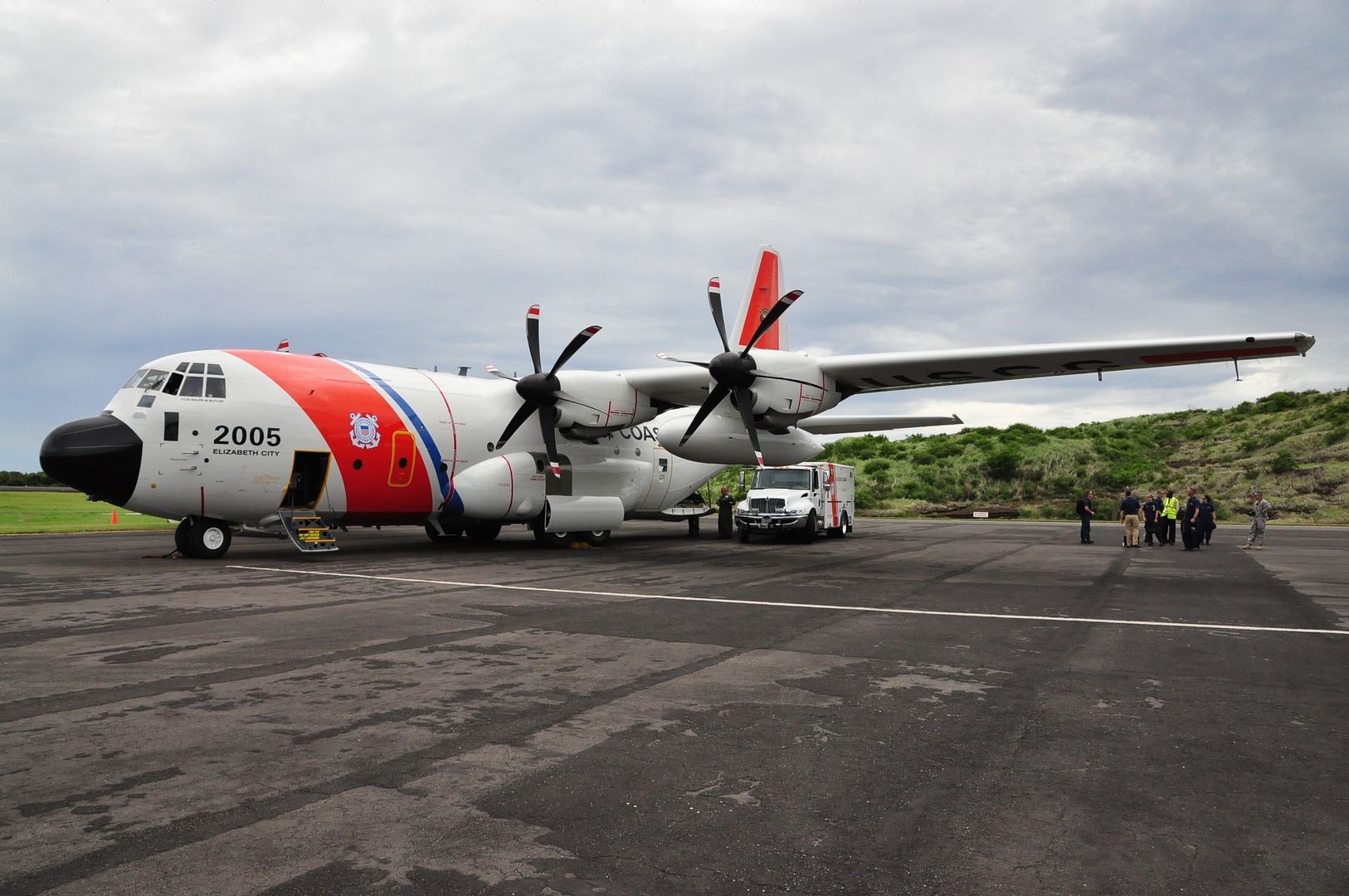
6/6/2016 - EDWARDS AIR FORCE BASE, Calif. -- A KC-10 Extender refuels an F-35A from the 461st Flight Test Squadron while a B-2 stealth bomber (bottom) and three F-16s wait their turn in this recently released photo. The planes were on various test missions when they all flocked to the KC-10 to refuel in midair via the tanker's boom. The B-2 is from the 419th Flight Test Squadron and the F-16s with the 416th FLTS.
-
 Main AdminA U.S. Air Force C-130J Hercules prepares to taxi to the runway during exercise Swift Response 16, June 6, 2016 at Ramstein Air Base, Germany. Swift Response is a joint, multinational-exercise designed to train the U.S. Global Response Force alongside high-readiness forces from Belgium, France, Germany, Italy, the Netherlands, Poland, Portugal, Spain and the United Kingdom. The men and women of the 40th AS support theater commanders' requirements with combat-delivery capability through tactical airland and airdrop operations as well as humanitarian efforts and aeromedical evacuation. (U.S. Air Force photo by Staff Sgt. DeAndre Curtiss/Released)
Main AdminA U.S. Air Force C-130J Hercules prepares to taxi to the runway during exercise Swift Response 16, June 6, 2016 at Ramstein Air Base, Germany. Swift Response is a joint, multinational-exercise designed to train the U.S. Global Response Force alongside high-readiness forces from Belgium, France, Germany, Italy, the Netherlands, Poland, Portugal, Spain and the United Kingdom. The men and women of the 40th AS support theater commanders' requirements with combat-delivery capability through tactical airland and airdrop operations as well as humanitarian efforts and aeromedical evacuation. (U.S. Air Force photo by Staff Sgt. DeAndre Curtiss/Released)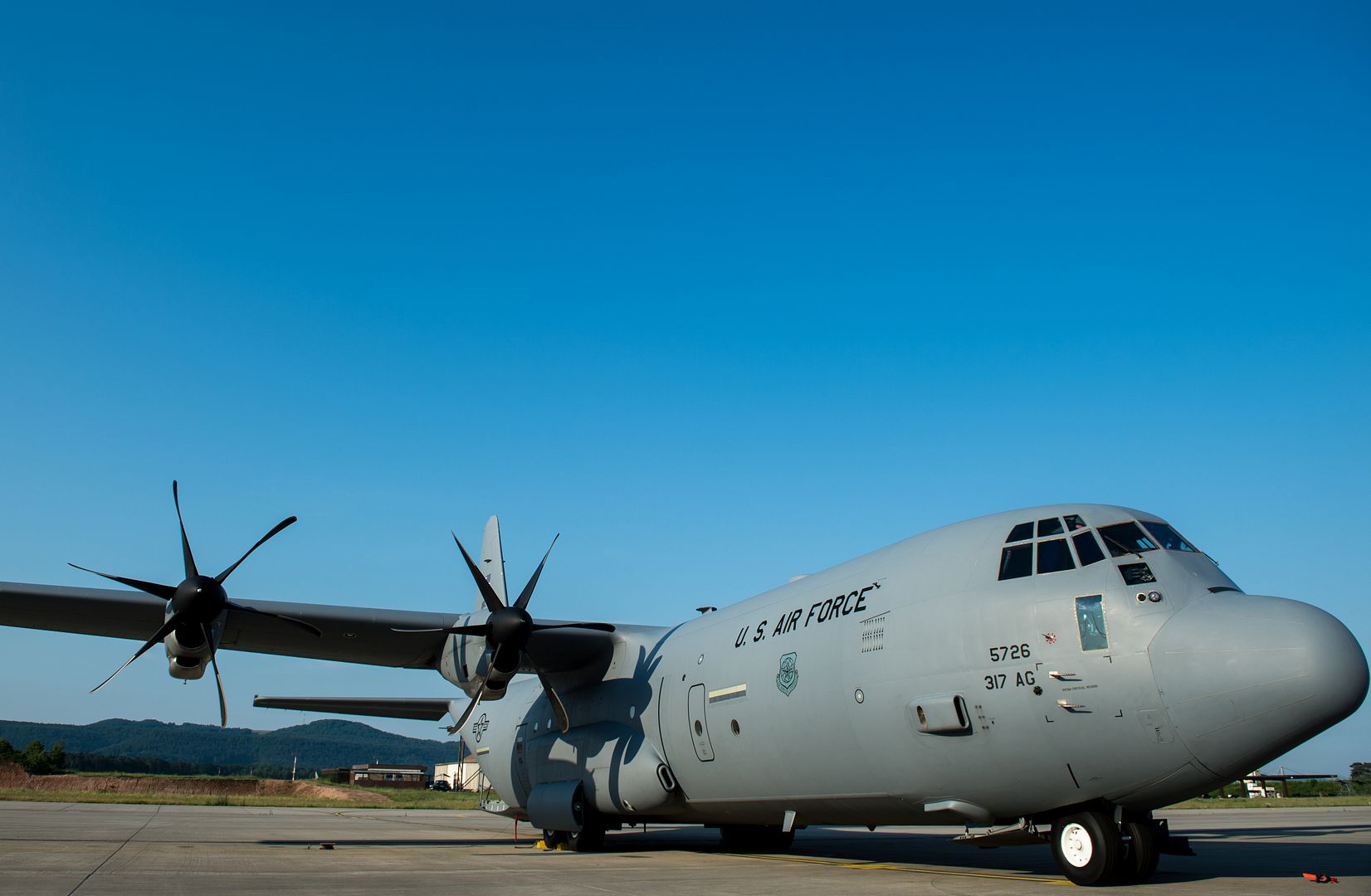
U.S. Air Force C-130J Hercules fly in formation towards a drop zone mission during exercise Swift Response 16, June 6, 2016 at Ramstein Air Base, Germany. Swift Response is a joint, multinational-exercise designed to train the U.S. Global Response Force alongside high-readiness forces from Belgium, France, Germany, Italy, the Netherlands, Poland, Portugal, Spain and the United Kingdom. The men and women of the 40th AS support theater commanders' requirements with combat-delivery capability through tactical airland and airdrop operations as well as humanitarian efforts and aeromedical evacuation. (U.S. Air Force photo by Staff Sgt. DeAndre Curtiss/Released)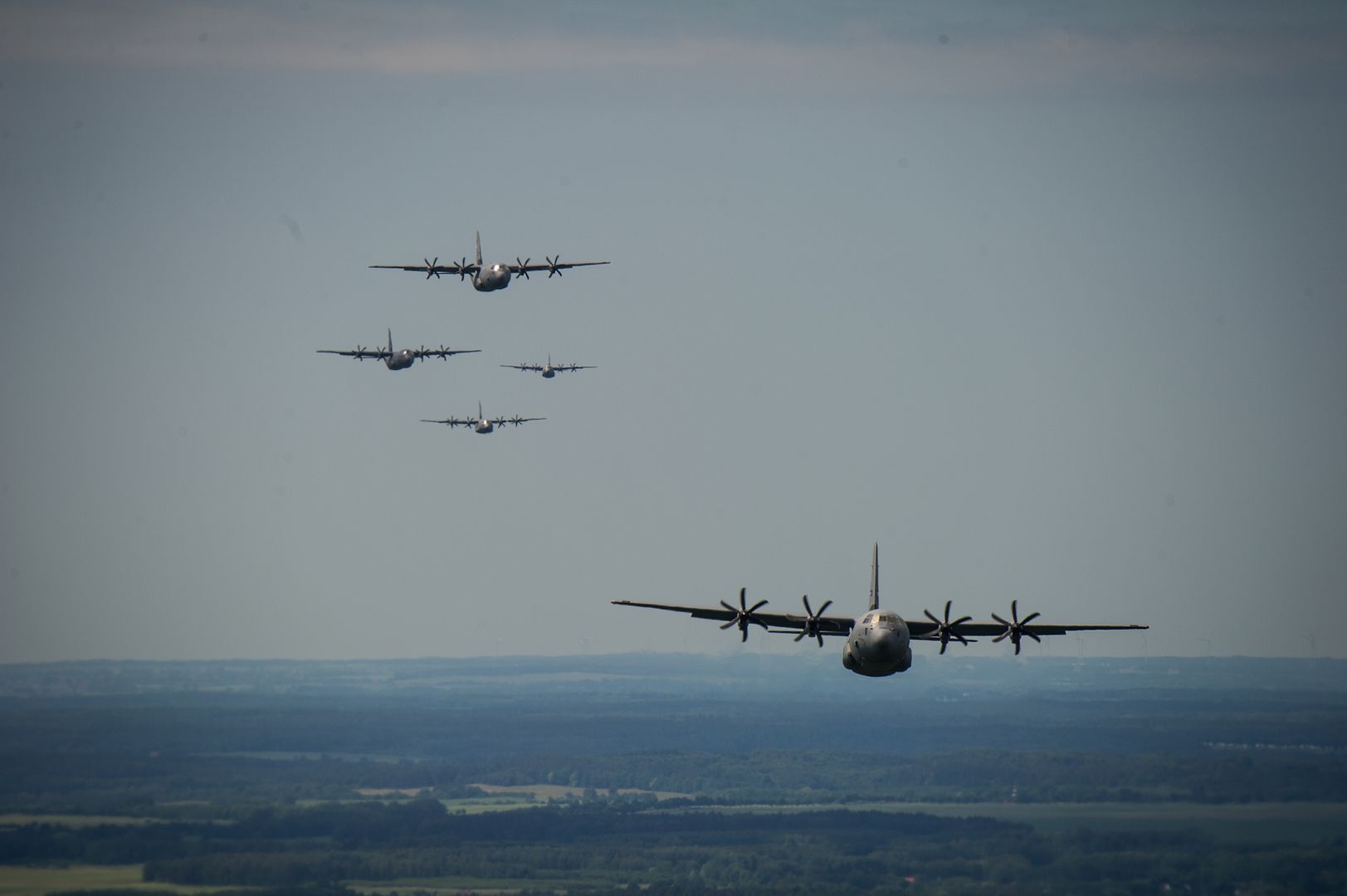
Multinational Soldiers participate in a parachute jump over the Torun Drop Zone during Exercise Swift Response. The exercise is one of the premier military crisis response training events for multi-national airborne forces in the world. The exercise is designed to enhance the readiness of the combat core of the U.S. Global Response Force-currently the 82nd Airborne Division's 1st Brigade Combat Team-to conduct rapid-response, joint-forcible entry and follow-on operations alongside Allied high-readiness forces in Europe. Swift Response 16 includes more than 5,000 Soldiers and Airmen from Belgium, France, Germany, Great Britian, Italy, the Netherlands, Poland, Portugal, Spain and the United States and takes place in Poland and Germany, May 27-June 26, 2016. (U.S. Army photo by Visual Information Specialist Jason Johnston/Released)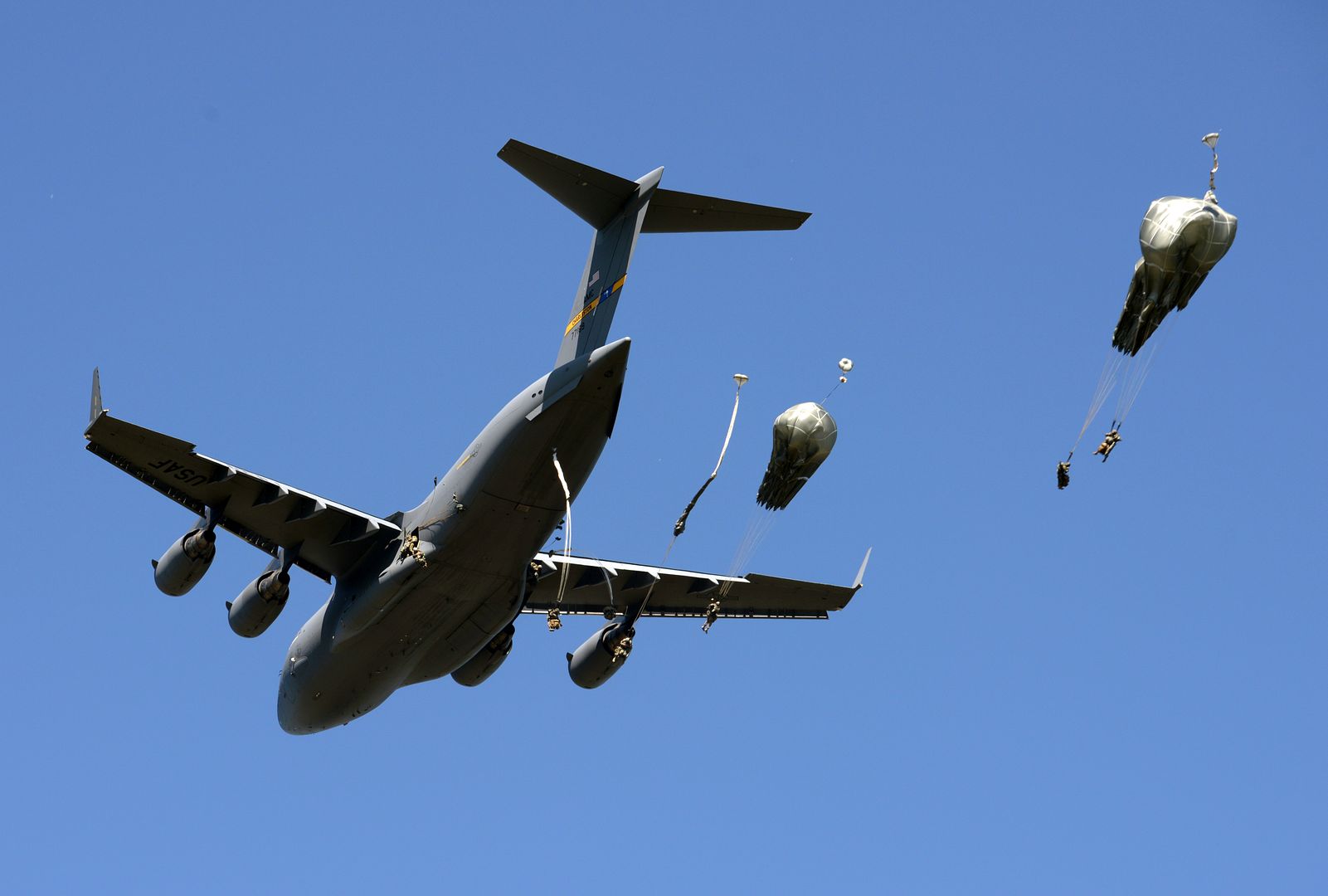
A Paratrooper assigned to 1st Brigade Combat Team, 82nd Airborne Division exits a U.S. Air Force C-17 over the skies of Torun, Poland during Exercise Swift Response 16, June 7.Exercise Swift Response 16 is one of the premier military crisis response training events for multi-national airborne forces in the world. The exercise is designed to enhance the readiness of the combat core of the U.S. Global Response Force to conduct rapid-response, joint forcible entry and follow-on operations alongside Allied high-readiness forces in Europe. Swift Response 16 includes more than 5,000 Soldiers and Airmen from Belgium, France, Germany, Great Britain, Italy, the Netherlands, Poland, Portugal, Spain and the United States and takes place in Poland and Germany, May 27-June 26. (Sgt. 1st Class Alexander Burnett, 82nd Airborne Division PAO)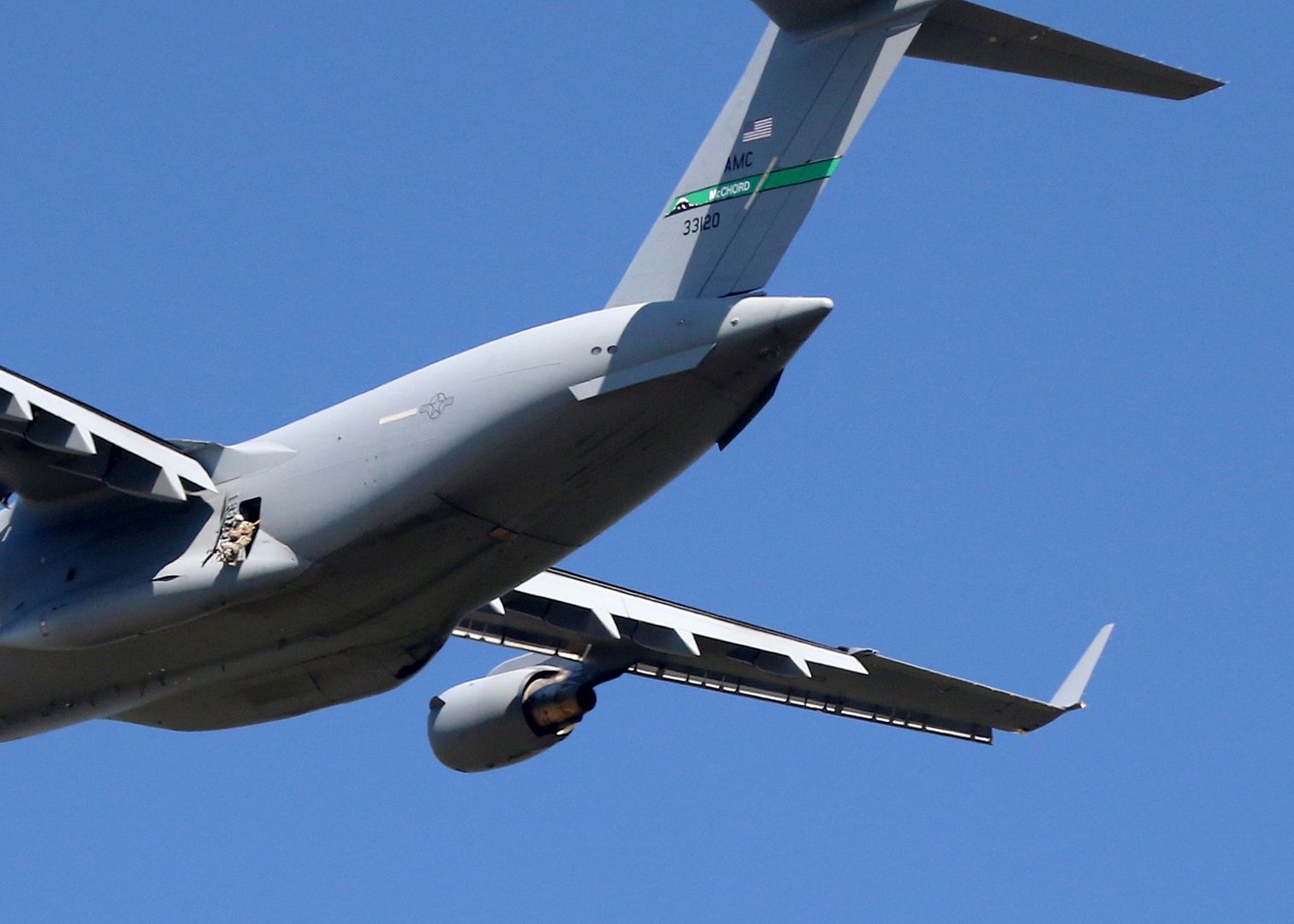
-
9 years ago
 Level 1American Airlines selects ViaSat to add in-flight Wi-Fi on 737 MAX fleet
Level 1American Airlines selects ViaSat to add in-flight Wi-Fi on 737 MAX fleet
US-based American Airlines has selected broadband services and technology company ViaSat to equip its new Boeing 737 MAX fleet with ViaSat's in-flight internet service.
With ViaSat's service, American Airlines' customers will be able to stream movies, videos, television and music, as well as surf the internet, upload pictures on social media, e-mail large files and other activities through their mobile devices.
By next September, the first 737 MAX jet with ViaSat in-flight internet is scheduled to be operational. Under the deal, ViaSat will provide in-flight internet to American Airlines' 100 Boeing 737 MAX aircrafts, reported Techcrunch.
ViaSat chairman and CEO Mark Dankberg said: "Our satellite bandwidth enables an 'at home' internet experience that can serve everyone on the plane and empowers innovative business models for airlines and their passengers.
"We are delighted and honored to have the opportunity to work with American Airlines and help fulfill their goal of delivering the best in-flight Wi-Fi experience throughout their fleet.
"We believe we are now approaching the end of an era where passengers have paid very high prices for very slow connections. Our agreement highlights a significant initial step for American to deliver an onboard Wi-Fi experience every passenger will want to use."
Post a reply
- Go to Next topic
- Go to Welcome
- Go to Introduce Yourself
- Go to General Discussion
- Go to Screenshots, Images and Videos
- Go to Off topic
- Go to Works in Progress
- Go to Skinning Tips / Tutorials
- Go to Skin Requests
- Go to IJAAF Library
- Go to Luftwaffe Library
- Go to RAF Library
- Go to USAAF / USN Library
- Go to Misc Library
- Go to The Ops Room
- Go to Made in Germany
- Go to Campaigns and Missions
- Go to Works in Progress
- Go to Juri's Air-Raid Shelter
- Go to Campaigns and Missions
- Go to Works in Progress
- Go to Skinpacks
- Go to External Projects Discussion
- Go to Books & Resources
